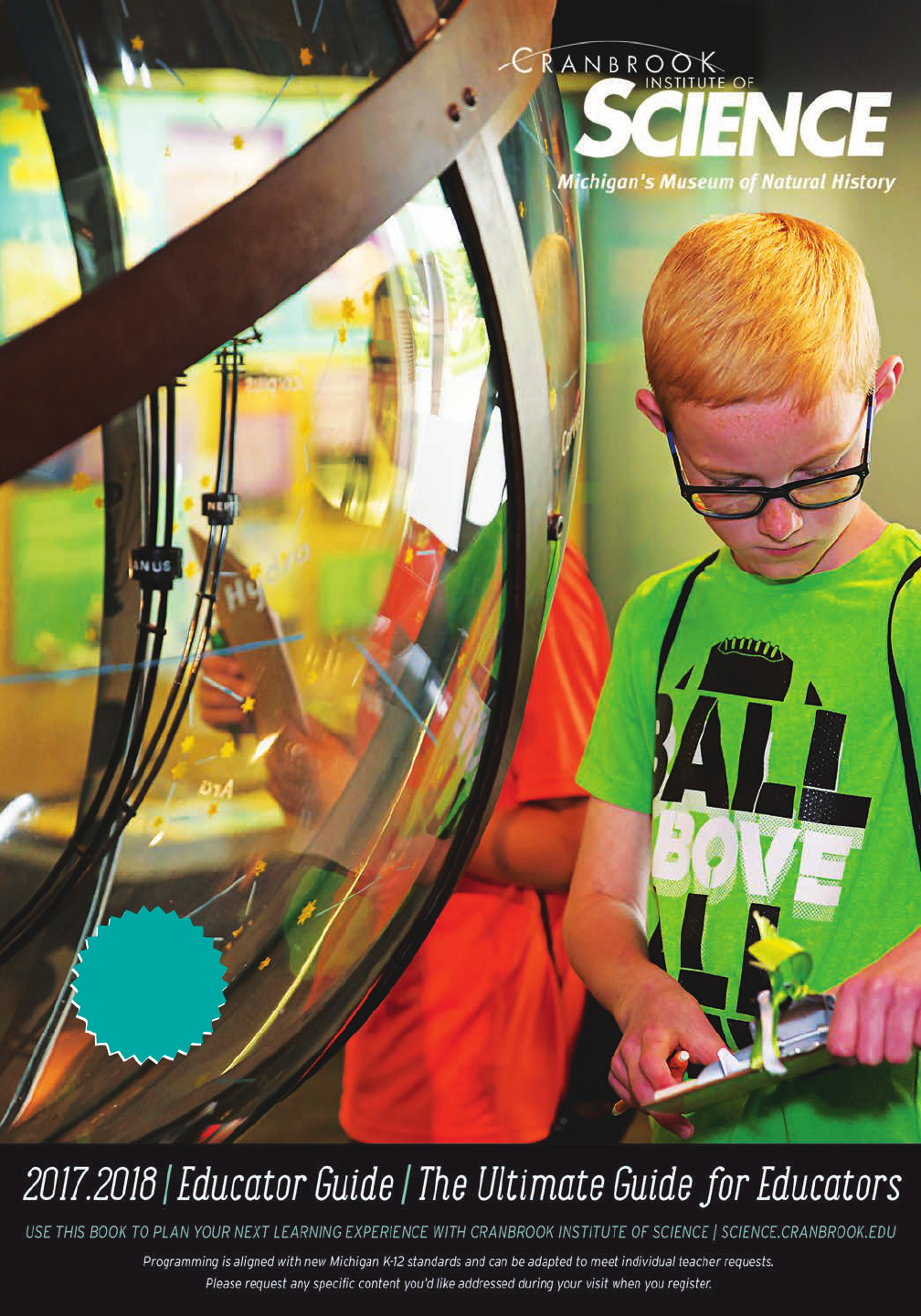
8
0
+
P
R
O
G
R
A
M
S
A
R
E
O
F
F
E
R
E
D
!
|
A
n
t
h
r
o
p
o
l
o
g
y
a
n
d
S
o
c
i
a
l
S
c
i
e
n
c
e
s
A
s
t
r
o
n
o
m
y
&
E
n
t
e
r
t
a
i
n
m
e
n
t
s
h
o
w
s
i
n
t
h
e
A
c
h
e
s
o
n
P
l
a
n
e
t
a
r
i
u
m
|
C
h
e
m
i
s
t
r
y
E
a
r
t
h
S
c
i
e
n
c
e
|
E
n
g
i
n
e
e
r
i
n
g
|
L
E
G
O
®
B
r
i
c
k
s
|
L
i
f
e
S
c
i
e
n
c
e
&
E
c
o
l
o
g
y
|
P
h
y
si
c
a
l
S
c
i
e
n
c
e
NEW!
exploreLAB
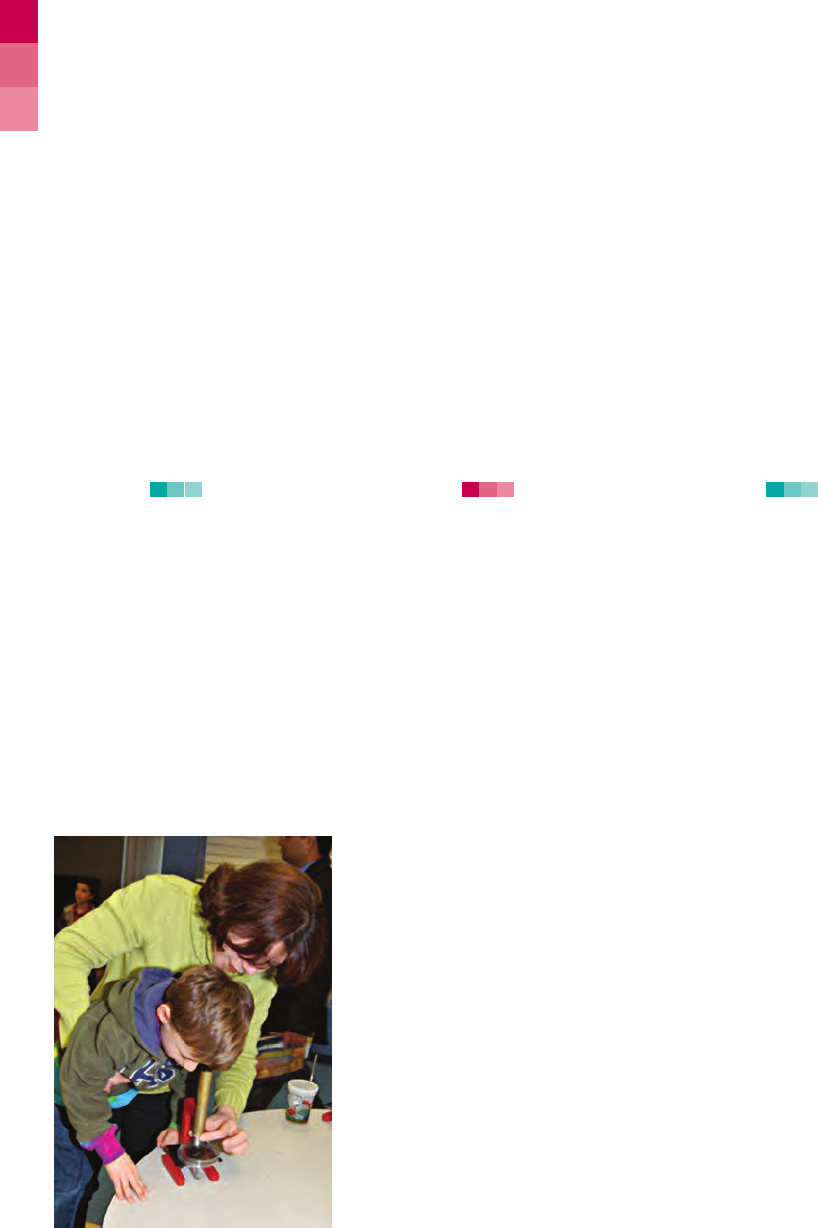
Teacher and chaperone involvement in the visit greatly
improves the students’ experience.
1. Chaperones are FREE at the ratio of 1 for every 3 preschool and kinder-
garten students, and 1 for every 5 students in grades 1-12. Teachers are
always FREE.
2. Additional chaperones (beyond the recommended ratio noted above) are
always welcome at an additional fee of $10 per person.
3. Please note: To qualify for group rates a minimum of 20 paying guests
is required.
4. Due to classroom space limitations, chaperones may not be able to attend
all programming.
5. Please brief your chaperones in advance so they will feel comfortable and
know what is expected of them and the students in their charge. We ask that
all chaperones supervise and stay with their group during the entire visit.
We reserve the right to shorten your group’s visit due to behavior issues that
impact other guests or museum property.
PLAN YOUR FIELD TRIP
Planning a field trip at Cranbrook Institute of Science is easy. We offer programs at our
beautiful Bloomfield Hills museum, at your school or virtually through videoconferencing.
In order to make the registration
process as easy as possible, USE
THE PLANNING WORKSHEET
for taking notes and exploring
options.
FIELD TRIPS PLAY AN IMPORT-
ANT ROLE FOR STUDENTS AND
EDUCATORS. A new learning
environment provides the
opportunity to build team and
small group skills and engage
students on an intellectual,
social and physical level.
By integrating classroom learning
with physical objects and hands-
on experiences, STUDENTS HAVE
AN OPPORTUNITY TO BETTER
UNDERSTAND CONCEPTS and
how they connect to the world
around them.
TEACHERS & CHAPERONES
Field Trips Encourage & Support Classroom Learning
REGISTRATION BEGINS AUGUST 28, 2017
FIELD TRIP AND SCIENCE ON THE GO! PROGRAMS AVAILABLE OCTOBER 3, 2017–JUNE 8, 2018
REGISTER ONLINE at science.cranbrook.edu (requires a 50% deposit at time of registration)
OR REGISTER BY PHONE 8am–4:30pm, Monday–Friday 248 645.3210 • A NON-REFUNDABLE 50% deposit is
required when submitting your registration. Balance is due no later than the day of your visit.
HELPFUL HINTS
• Programs start on the hour and run 45 minutes. • Due to limited space, we are only able to store coats and lunches.
• Food and beverages are only permitted in designated areas. • Chewing gum is not permitted in the museum.

1
PLANNING WORKSHEET
REGISTER AT 248 645.3210. HERE'S THE INFORMATION NEEDED FOR REGISTRATION.
TELL US ABOUT YOU
Name
Email
Phone
Alternate Phone
School Name
District
School Office Phone
Street
City County
State + Zip
WHEN WOULD YOU LIKE TO VISIT?
1ST CHOICE 2ND CHOICE
DATE ARRIVAL DEPARTURE
TIME TIME
DATE ARRIVAL DEPARTURE
TIME TIME
TELL US ABOUT YOUR GROUP
GRADE(S) ______________________ # STUDENTS ___________________ # TEACHERS ___________________ # CHAPERONES __________________
WHEN REGISTERING MULTIPLE GRADES, PLEASE PROVIDE THE NUMBER OF STUDENTS PER GRADE. CHAPERONES ARE FREE AT THE RATIO OF 1 FOR EVERY 3 PRESCHOOL AND KINDERGARTEN
STUDENTS, AND 1 FOR EVERY 5 STUDENTS IN GRADES 1-12. TEACHERS ARE ALWAYS FREE.
ADDITIONAL CHAPERONES (BEYOND THE RECOMMENDED RATIO NOTED ABOVE) ARE ALWAYS WELCOME AT AN ADDITIONAL FEE OF $10 PER PERSON. PLEASE NOTE: TO QUALIFY FOR FIELD TRIP
GROUP RATES A MINIMUM OF 20 PAYING GUESTS IS REQUIRED. NOTE: DUE TO CLASS ROOM LIMITATIONS, CHAPERSONES MAY NOT BE ABLE TO ATTEND ALL PROGRAMMING.
WHICH PROGRAMS ARE YOU CONSIDERING?
PROGRAM #1 ____________________________________________________________ PROGRAM #3 ____________________________________________________________
PROGRAM #2 ____________________________________________________________ PROGRAM #4 ____________________________________________________________
NOTE: See page 4 for an overview of all programs and pages 8-23 for detailed descriptions of each program.
• Interested in Science on the Go! field trips at your school? See pages 22-23 for more information. • Interested in Science on the Screen! videoconferencing
field trips at your school? See page 24 for more information. Please note: To qualify for field trip group rates a minimum of 20 paying guests is requred.
LET'S WORK OUT LOGISTICS
(Cafe lunches are $5.50 per person. See page 26 for details and menus.)
WILL YOU NEED SPACE FOR LUNCH? + YES + NO
STUDENTS WILL: + BRING THEIR LUNCHES + TEACHER WILL PRE-PURCHASE LUNCH FROM THE CAFE
DOES YOUR GROUP HAVE ANY SPECIAL NEEDS? + YES + NO EXPLAIN______________________________________
WILL YOU ARRIVE: + BY CAR + BUS
WILL ANYONE BRING A WHEELCHAIR? + NO + YES HOW MANY? __________________________________
DO YOU AUTHORIZE CRANBROOK TO PHOTOGRAPH YOUR STUDENTS FOR PROMOTIONAL PURPOSES? + YES + NO
PAYMENT OPTIONS
PER STUDENT PRICING
1 PROGRAM $12
2 PROGRAMS $15
3 PROGRAMS $17
4 PROGRAMS $19
EXTRAS AND ADD-ONS
RECEIVE OUR FREE TEACHER E-NEWSLETTER + YES + NO
INTERESTED IN SCIENCE-RELATED PROFESSIONAL DEVELOPMENT SEE PAGE 25 + YES + NO
BECOME A MEMBER AT CRANBROOK INSTITUTE OF SCIENCE SEE PAGE 31 + YES + NO
SEE PRICING & PAYMENT ON PAGE 5 FOR
COMPLETE LISTING.
PLEASE NOTE: CRANBROOK INSTITUTE OF
SCIENCE MEMBERSHIP DOES NOT APPLY TO
FIELD TRIPS.
SOME PROGRAMS HAVE AN ADDITIONAL FEE.
REGISTER:
ONLINE AT SCIENCE.CRANBROOK.EDU (REQUIRES 50%
DEPOSIT AT THE TIME OF REGISTRATION OR
BY PHONE:
8AM-4:30PM, MONDAY-FRIDAY 248 645.3210
A NON-REFUNDABLE 50% DEPOSIT IS REQUIRED WHEN SUBMITTING YOUR REGISTRATION.
BALANCE IS DUE NO LATER THAN DAY OF VISIT.
+ CHECK
+ CREDIT CARD
+ CASH IN PERSON
EXTRA CHAPERONES + $10 PER PERSON.
3
2
4
5
6
REGISTRATION BEGINS AUGUST 28, 2017
FIELD TRIP AND SCIENCE ON THE GO! PROGRAMS AVAILABLE OCTOBER 3, 2017–JUNE 8, 2018

SUBJECT PROGRAM GRADES
ANTHROPOLOGY & SOCIAL STUDIES Pages 8-9
ANCIENT ROME: AGE OF THE CEASARS – NEW 4 5 6 7 8 9 10 11 12+
ARCHAEOLOGY EXPEDITION 3 4 5 6
BODIES BOUNDING! – NEW K 1 2
FRONTIER MICHIGAN K 1 2 3
FUR TRADE HISTORY ALIVE! 3 4 5 6 7 8 9 10 11 12+
HISTORY OF CHOCOLATE – NEW 3 4 5 6 7 8 9 10 11 12+
HUMANITY IN MOTION – NEW 5 6 7 8
MONEY! 3 4 5 6 7 8
STARS OF THE PHARAOHS (Planetarium Program) 3 4 5 6 7 8 9 10 11 12+
THE PEOPLE OF THE THREE FIRES 3 4 5 6
ASTRONOMY & SPACE SCIENCE
Pages 10-12
COSMIC COLORS – AN ADVENTURE
ALONG THE SPECTRUM 7 8 9 10 11 12+
EVOLUTION OF THE STARS 8 9 10 11 12+
NIGHT SKY OBJECTS AND BEYOND 1 2 3 4 5 6 7 8 9 1 0 11 12+
ONE WORLD, ONE SKY: BIG BIRD’S ADVENTURE P K 1 2 3
REASON FOR THE SEASONS 4 5 6 7 8 9 10 11 12+
SEASON CHANGES & MOON PHASES 4 5 6 7 8 9 10 11 12+
SECRET OF THE CARDBOARD ROCKET K 1 2 3 4
SOLAR SYSTEM EXPLORATION 4 5 6 7 8 9 10 11 12+
STARS OF THE PHARAOHS 3 4 5 6 7 8 9 10 11 12+
STORIES IN THE STARS 5 6 7 8 9 10 11 12+
WORLDS OF WEATHER 4 5 6 7 8 9 10 11 12+
YOUNG STARGAZERS SKY JOURNEY P K 1
CHRISTMAS LIGHTS! K 1 2 3 4 5 6 7 8 9 10 11 12+
LET IT SNOW P K 1 2 3 4 5 6 7 8 9 10 11 12+
MYSTERY OF THE CHRISTMAS STAR 3 4 5 6 7 8 9 10 11 12+
SPACEPARK360 K 1 2 3 4 5 6 7 8 9 10 11 12+
SPACEPARK360: LUCID DREAMING EDITION K 1 2 3 4 5 6 7 8 9 10 11 12+
CHEMISTRY Page 14
CHEMICAL REACTIONS – NEW (LEGO® Bricks Program) 6 7 8
EARTH SCIENCE
Pages 14-15
CONTINENTAL DRIFT TO PLATE TECTONICS 5 6 7 8 9 10 11 12+
DINOSAURS 3 4 5 6 7 8 9 10 11 12+
DINOSAURS AT DUSK (Planetarium Program) 3 4 5 6 7 8 9 10 12+
DINOSAUR TALE P K 1 2
EARTH SYSTEM SCIENCE 6 7 8 9 10 11 12+
ICE AGE MICHIGAN AND THE BIG MELTDOWN – NEW 4 5 6 7 8 9 10 11 12+
JOURNEY TO THE CENTER OF THE EARTH 1 2 3 4 5 6 7 8 9 10 11 12+
ORIGIN OF THE GREAT LAKES 4 5 6 7 8 9 10 11 12+
SAVAGE SEAS – NEW 4 5 6 7 8 9 10 11 12+
ENGINEERING Pages 16-17
APPROACHES TO PROBLEM SOLVING – NEW 4 5 6 7 8
FROM DREAM TO DISCOVERY (Planetarium Program) 3 4 5 6 7 8 9 10 11 12+
LEVERS TO LIFT OFF 5 6 7 8 9 10 11 12+
PEGBOARD CHALLENGE – NEW 5 6 7 8
LIFE SCIENCE & ECOSYSTEMS Page 17-19
ANIMAL DIVERSITY 4 5 6 7 8 9 10
DNA STRUCTURES AND REPLICATION – NEW 6 7 8 9 10 11 12+
DECODING DNA – NEW 6 7 8 9 10 11 12+
TRANSCRIBING DNA AND RNA – NEW 6 7 8 9 10 11 12+
GREAT LAKES FOOD WEB 4 5 6 7 8 9 10 11 12+
HOW WE USE WATER 2 3 4 5 6 7 8 9 10 11 12+
I LIVE IN A WATERSHED 5 6 7 8
MICHIGAN ECOSYSTEMS 4 5 6 7
NATURAL SELECTION (Planetarium Program) 6 7 8 9 10 11 12+
OUTDOOR SCAVENGER WALK P K 1 2 3 4
PHOTOSYNTHESIS – NEW (LEGO® Bricks Program) 6 7 8
UNDERSTANDING AIR – NEW (LEGO® Bricks Program) 6 7 8
WEBS, WINGS, AND CRAWLING THINGS –
NEW (live invertebrates) P K 1 2 3 4 5 6
YOU, ME, AND THE BLUE PLANET 4 5 6 7 8 9 10 11 12+
PHYSICAL SCIENCE Pages 20-21
ELECTRICITY AND MAGNETISM 2 3 4 5 6 7 8
FORCES AND MOTION K 1 2 3 4 5 6
INQUIRY INVESTIGATION P K 1 2 3 4 5
LIGHT AND SOUND 1 2 3 4 5 6 7 8
MATTER AND ENERGY 1 2 3 4 5 6 7 8
PHYSICS OF FLING! 2 3 4 5 6 7 8 9 10 11 12+
WAVES AND ENERGY – NEW 6 7 8
WEATHER 4 5 6 7 8
AT YOUR SCHOOL Pages 22-24
SCIENCE ON THE GO! P K 1 2 3 4 5 6 7 8
SCIENCE ON THE SCREEN! 2 3 4 5 6 7 8 9 10 11 12+
PROGRAMS AT A GLANCE
CRANBROOK: SUPPORTING YOUR CURRICULUM GOALS!
CRANBROOK INSTITUTE OF SCIENCE MAKES IT EASY TO RELATE FIELD TRIPS TO THE NEW MICHIGAN K-12 SCIENCE
STANDARDS AND GRADE LEVEL CONTENT EXPECTATIONS.
PLANETARIUM Page 13
ENTERTAINMENT
(programs presented in the Acheson Planetarium)

5
science.cranbrook.edu
PRICING & PAYMENT
PLAN YOUR FIELD TRIP
Prices include admission, all exhibits, parking and chaperone resources for exploring the museum
PER STUDENT
1 PROGRAM $12
2 PROGRAMS $15
3 PROGRAMS $17
4 PROGRAMS $19
UPCHARGE FEES
PER STUDENT/PERSON
ADDITIONAL CHAPERONES/ADULTS +$10
APPROACHES TO PROBLEM SOLVING +$3
ARCHAEOLOGY EXPEDITION +$2
HISTORY OF CHOCOLATE +$1
ICE AGE MICHIGAN AND THE BIG MELTDOWN
+$1
ENGINEERING: LEVERS TO LIFT-OFF +$5
SAVAGE SEAS +$1
PHYSICS OF FLING!
(MAX 30 STUDENTS PER PROGRAM)
IF PROGRAM FACILITATED
AT CRANBROOK $400
IF PROGRAM FACILITATED AT YOUR SCHOOL $550
IF PROGRAM SPLIT BETWEEN BOTH VENUES $450
SCIENCE ON THE GO!
SMALL GROUPS
(MAX 30 STUDENTS PER PROGRAM)
$275
FOR EACH ADDITIONAL PROGRAM $175
LARGE GROUPS (MAX 150 STUDENTS PER PROGRAM $325
FOR EACH ADDITIONAL PROGRAM $200
CALL FOR MULTI-PROGRAM PRICING AT
248 645.3210
FAMILY SCIENCE NIGHT
(MAX 300 PARTICIPANTS PER PROGRAM) $675*
*BASED ON STATION SELECTIONS, ADDITIONAL MATERIAL FEES MAY APPLY
SCIENCE ON THE SCREEN!
(MAX 30 STUDENTS PER PROGRAM, PRICE PER PROGRAM)
$125
AT THE TIME OF REGISTRATION:
• A NON-REFUNDABLE DEPOSIT of 50% of your total invoice is
due. Balance is due no later than day of visit.
• You will be required to provide a final attendance count 21 calendar
days prior to your visit.
• You are responsible for full payment for the final attendance count
provided or the number of attendees present the day of visit and will
be charged the greater amount at time of check-in.
• Due to space limitations, only pre-registered students are guaranteed
a program.
• Additional chaperones beyond the recommended ratios are welcome
for $10 per person.
• To qualify for field trip group rates a minimum of 20 paying guests
is required.
• Cranbrook Institute of Science membership discounts and admission
do not apply to field trips.
FOR CANCELLATIONS MADE MORE THAN
30 CALENDAR DAYS FROM DATE OF VISIT:
• Reschedule with no additional fees.
• Your 50% non-refundable deposit will be credited towards a future
field trip occurring before June 8, 2018.
• Remaining pre-payment greater than 50% will be refunded by check
to the person who completed the reservation.
CANCELLATIONS MADE LESS THAN
30 CALENDAR DAYS FROM DATE OF VISIT:
• Your 50% deposit is forfeited.
• Any remaining payment will be credited to a future field trip
occurring before June 8, 2018.
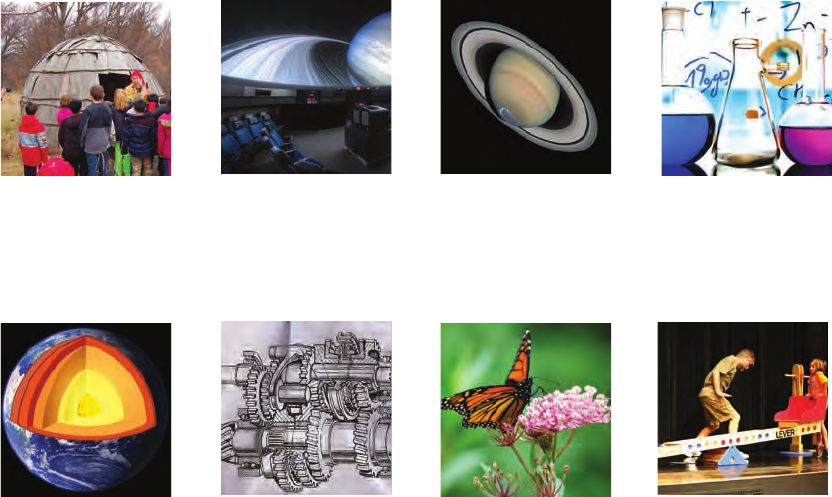
TABLE OF CONTENTS
P. 1-5
PLANNING A FIELD TRIP
Field Trip Programs
P. 22-24
SCIENCE ON THE GO! FIELD TRIPS OR SCIENCE ON THE SCREEN! FIELD TRIPS
P. 25
PROFESSIONAL DEVELOPMENT AND OTHER OPPORTUNITIES
P. 26
SCIENCE SHOP, CAFE AND LUNCH ORDERS
P. 27-28
GALLERIES, EXHIBITS, EXPLORE LAB
P. 29-30
SCOUTS, OVERNIGHT SCHOOL FIELD TRIPS, CAMP, BIRTHDAY PARTIES
P. 31
MEMBERSHIP, TRANSPORTATION AND MAPS
P. 10-12
ASTRONOMY/SPACE
SCIENCE IN THE ACHESON
PLANETARIUM
P. 16-17
ENGINEERING
P. 13
ENTERTAINMENT IN THE
ACHESON PLANETARIUM
P. 17-19
LIFE SCIENCE
AND ECOSYSTEMS
P. 20-21
PHYSICAL SCIENCE
P. 14
CHEMISTRY
P. 8-9
ANTHROPOLOGY
& SOCIAL SCIENCES
P. 14-15
EARTH SCIENCE

( )
200,000
ARTIFACTS & OBJECTS IN THE
INSTITUTE'S COLLECTIONS!
It’s easy to plan
a field trip
to Cranbrook
Institute of Science.
• It’s easy to plan a field trip to
Cranbrook Institute of Science.
The Institute of Science offers
over 80 field trip programs as
well as special and permanent
exhibits, planetarium shows, and
seasonal events.
• All programming at the Institute
is aligned with the new Michigan
K-12 Science Standards and
emphasis is placed on your
group’s grade level.
• Our registration experts work
with you to customize a field trip
experience unlike any other. With
options such as interacting with
hands-on artifacts, a planetarium
visit, lunch at the Institute, even
a visit to our gift shop, we can
help plan a memorable
experience for your students.
Welcome to
Cranbrook Institute
of Science
Founded by Detroit philanthropists George and Ellen Booth
in 1904, Cranbrook’s 319-acre campus is one of the world’s
leading centers of education, science and art.
Cranbrook Institute of Science
is Michigan’s Museum of Natural
History. As a natural history and
science museum, Cranbrook
fosters in its members and
visitors a passion for under-
standing the world around them.
Drawing from its vast collection
of more than 200,000 objects
and artifacts, the Institute offers
public programs, exhibits, events
and lectures throughout the
year. School trips to Cranbrook
offer the chance to meet science
professionals active in their fields
and the opportunity to interact
with a unique, world-class collec-
tion of objects and artifacts.
7
science.cranbrook.edu
Photo credit: Jeff Scovil
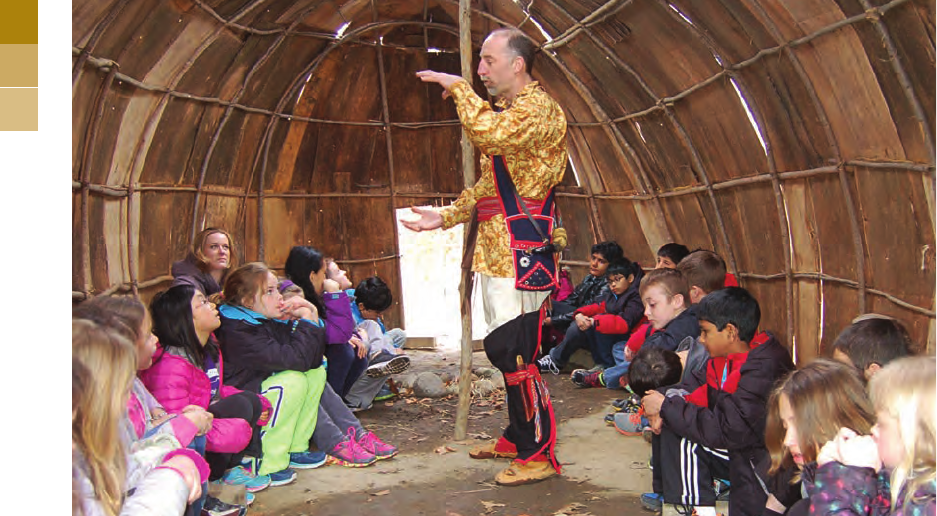
ANTHROPOLOGY & SOCIAL STUDIES
What Does It Mean To Be Human?
8
248 645.3210
ARCHAEOLOGY EXPEDITION
GRADES
3 | 4 | 5 | 6
Participate in a simulated archaeological dig! Just
like professional archaeologists, students excavate
a site to unearth artifacts. After mapping, recording
and interpreting their findings, students piece to-
gether what life was like for the earliest inhabitants
of Michigan and present the results of their inquiry.
All students take home an expedition souvenir.
Offered Oct 3–Nov. 21, 2017 and Apr. 11–June 8, 2018.
Program occurs outdoors; dress appropriately for the
weather. There is a $2 up charge per student for this
program.
ANCIENT ROME:
AGE OF THE CAESARS – NEW
GRADES
4 | 5 | 6 | 7 | 8 | 9 | 10 | 11 | 12+
Hail Caesar! March deeper into the story of the
Roman Empire in Ancient Rome. Drill with your
centurion and see if you can keep in formation.
Explore the geography and cultures of the Empire
as all roads lead you to Rome. There, discover how
Roman government and law forms the basis for that
of our modern United States of America.
Offered Feb. 6–June 8, 2018
BODIES BOUNDING! – NEW
GRADES
K | 1 | 2
Human beings’ body structure, advanced intellect
and diversity of cultures make us unique creatures
on Earth. This program allows young learners to
investigate through physical play and observation
of Institute animal collections. How does a human’s
skeleton compare to a cat’s or a bird’s? Walk, hop,
bound, bend and stretch to imitate animals and
begin to explore human expression through dance
and movement play.
Participants should expect modest to moderate fun physi-
cal activity for a portion of the program time
.
FRONTIER MICHIGAN
GRADES
K | 1 | 2 | 3
Explore a time of great change in late 18th Century
Michigan as fur traders, Native Americans, farmers,
shopkeepers, soldiers, tradesmen and servants
mingled on city streets and rural pathways.
Educators in period costume use hands-on
materials, historical documents and artwork to
bring Michigan’s community history to life with a
focus on labor, community roles and land use.
EXPLORE THE HUMAN EXPERIENCE
ACROSS TIME AND PLACE

FUR TRADE HISTORY ALIVE!
GRADES
3 |
4 | 5 | 6 | 7 | 8 | 9 | 10 | 11 | 12+
Explore the world of the 18th Century French fur
trader and his Native American counterpart in
the Great Lakes. This program takes place in an
authentic Great Lakes wigwam and includes hands-
on experiences with tools and fur pelts to reveal
the delicate interplay between two very different
cultures.
Program occurs outdoors; dress appropriately for
the weather.
HISTORY OF CHOCOLATE – NEW
GRADES
3 |
4 | 5 | 6 | 7 | 8 | 9 | 10 | 11 | 12+
Get a better taste of our Chocolate exhibition
with this engaging program. Explore the ecology
of the cacao tree, and assist our staff in caring for
our own trees. Then investigate the ancient Mayan
use of cacao, and make your own authentic cacao
drink to try! Anthropology meets Life Science
with sweet results.
Offered October 3–December 22, 2017. With teacher
permission, students will make and have the option to
drink cacao mixture containing cacao, corn masa, water,
honey, and chili powder. There is a $1 upcharge per person
for this program.
MONEY!
GRADES
3 | 4 | 5 | 6 | 7 | 8
Students learn how economics impacts their lives
every day. Using collaborative activities, this
program illuminates barter and money economies.
Students operate their own stores, participate in
trade networks and apply math skills to develop
an understanding of the importance of fiscal
responsibility.
THE PEOPLE OF THE THREE FIRES
GRADES
3 | 4 | 5 | 6
Enter the world of the Ottawa, Ojibway and
Potawatomi tribes of Michigan. Artifacts, interactive
games and activities combine to reveal the history
of Michigan’s First Peoples. The program touches
upon language, sports and games, arts and cultural
ideals—both past and present—of the tribes known
as “The People of the Three Fires”.
HUMANITY IN MOTION – NEW
GRADES
5 | 6 | 7 | 8
In all countries and cultures throughout history,
martial arts, dance forms, sports and other patterns
of human movement have been important. This
program gets students up and moving to explore
the diversity of cultures around the world. Based
upon grade Social Studies curriculum require-
ments and/or teacher request, learners can find
themselves dancing an 18th century American
social dance, moving to the five animals of Shaolin
kung-fu, or following the African Diaspora in music,
dance, and martial sport.
Participants should expect modest to moderate fun
physical activity for a portion of the program time.
ANTHROPOLOGY & SOCIAL STUDIES
9
science.cranbrook.edu
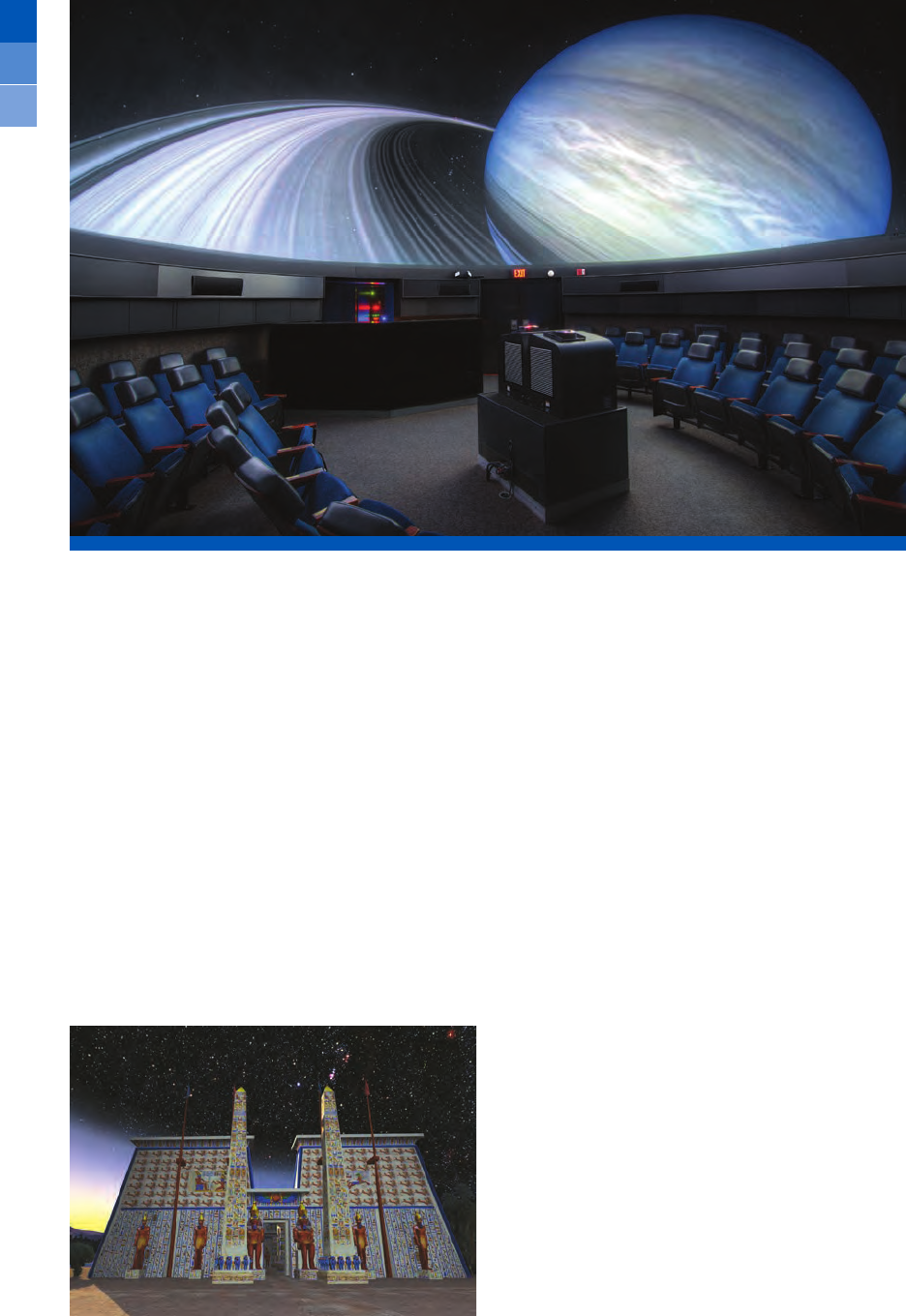
10
248 645.3210
ASTRONOMY -
ACHESON PLANETARIUM PROGRAMS
What's Out There?
SPACE SCIENCE TAKES US EXPLORING IN OUR OWN GALAXY—AND BEYOND!
STARS OF THE PHARAOHS
GRADES
3 | 4 | 5 | 6 | 7 | 8 | 9 | 10 | 11 | 12+
Travel to ancient Egypt to see how astronomy was
used to tell time and align huge buildings. Learn
about the connection the ancient Egyptians felt
with the stars and various astronomical phenome-
na and see some of the most spectacular temples
and tombs of the ancient world recreated in their
original splendor.
This program takes place in the Acheson Planetarium.
COSMIC COLORS - AN ADVENTURE
ALONG THE SPECTRUM
GRADES
7 | 8 | 9 | 10 | 11 | 12+
Cosmic Colors will take you on a wondrous journey
across the entire electromagnetic spectrum in this
brand-new immersive program in the Acheson
Planetarium. Discover the many reasons for color—
like why the sky is blue and why Mars is red. Take
a tour within a plant leaf and journey inside the
human eye. Investigate x-rays by voyaging to a
monstrous black hole and then back at your doc-
tor’s office. You will even see the actual color of a
dinosaur—based on recent evidence. Get ready for
an amazing adventure under a rainbow of cosmic
light!
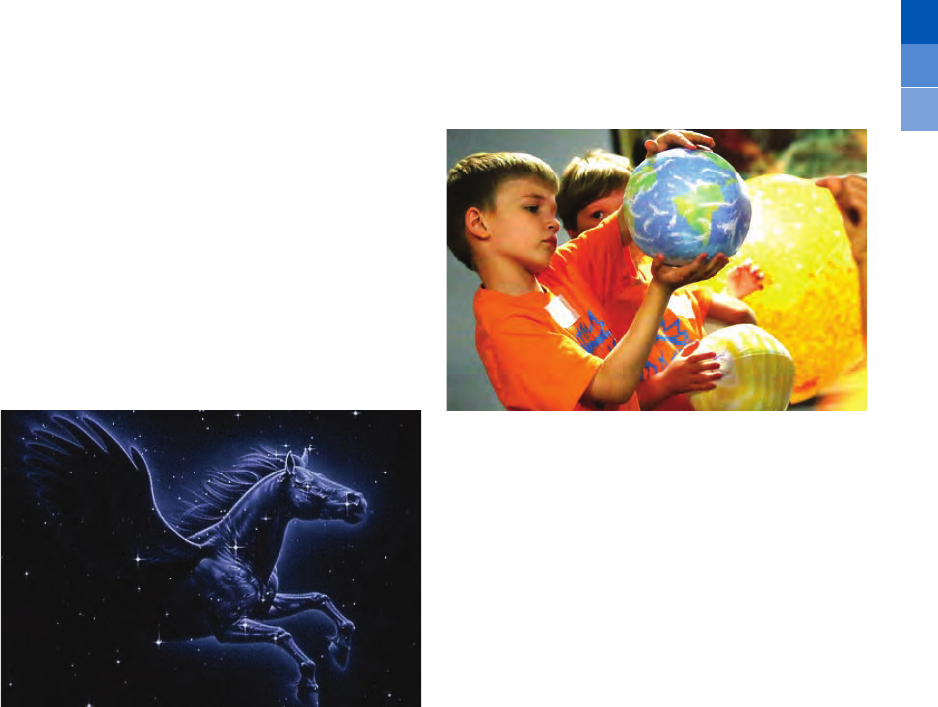
EVOLUTION OF THE STARS
GRADES
8 | 9 | 10 | 11 | 12+
This intense, informative program is a look at
the evolution of stars in general and the Sun in
particular. From the turbulent cauldron of their
birth through the multitude of cataclysmic ways
they can meet their end, students will discover
the many secrets stars hold.
This is a partially live-narrated program.
REASON FOR THE SEASONS
GRADES
4 | 5 | 6 | 7 | 8 | 9 | 10 | 11 | 12+
This exciting live presentation demonstrates why
the start of the seasons depends on your location
on Earth as well as Earth’s position around the
Sun. Observe the Sun’s altitude and daily motion
from various latitudes. Discover why your favorite
constellations aren’t visible every night. Could the
seasons and the ever-changing sky at night be
linked? Find out!
SEASON CHANGES & MOON PHASES
GRADES
4 | 5 | 6 | 7 | 8 | 9 | 10 | 11 | 12+
Discover the reason for the seasons in this exciting
live presentation! Learn why the start of the seasons
depends on your location on Earth as well as Earth’s
position around the Sun. Observe the Sun’s altitude
and daily motion from various latitudes and visit
Mars! Discover the phases of the Moon and uncover
the mysteries of both solar and lunar eclipses.
SECRET OF THE
CARDBOARD ROCKET
GRADES
K | 1 | 2 | 3 | 4
What is the secret of the cardboard rocket? Two
young adventurers turn an old cardboard box into
a rocket and blast off on an awesome adventure to
the most amazing places in the solar system! Join
them as they visit the planets to learn what makes
each one unique and what makes Earth such a
special place to live.
This program is available in either a 30– or 40–minute
format. Specify your preferred format length when
registering.
ONE WORLD, ONE SKY:
BIG BIRD’S ADVENTURE
GRADES
P | K |
1 | 2 | 3
Join Big Bird, Elmo and Hu Hu Zhu on an exciting
discovery of the Sun, Moon and stars. Find the Big
Dipper and the North Star. Take an imaginary trip
that explores the differences between the Moon
and Earth. Join them back on Earth to celebrate the
idea that even though they live in different coun-
tries, they still share the same sky.
ASTRONOMY & SPACE SCIENCE
11
science.cranbrook.edu
NIGHT SKY OBJECTS AND BEYOND
GRADES
1 | 2 |3 | 4 | 5 | 6 | 7 | 8 | 9 | 10 | 11 | 12+
The emphasis is on all-around sky viewing. Find the
Big Dipper, North Star, planets and constellations in
the current sky. Observe the apparent motion of the
sky. Venture into interstellar space to explore our
starry home — the Milky Way Galaxy — in stunning
three-dimensions!
Note: This partially live-narrated program is updated
weekly to reflect the latest astronomical discoveries or
topics of interest.

YOUNG STARGAZERS SKY JOURNEY
GRADES
P | K | 1
Make the sky turn dark and sprinkle it with stars!
Embark on an exciting and educational journey
through the night sky, viewing constellations and
visiting the planets. This is a live-narrated program.
WORLDS OF WEATHER
GRADES
4 | 5 | 6 | 7 | 8 | 9 | 10 | 11 | 12+
What’s the difference between climate and
weather? Is Earth the only planet in our solar
system that has varying climates and changing
weather patterns? How does Earth’s climate and
weather compare to other planets in our solar
system? By studying and comparing Earth’s unique
position within the solar system, we answer these
and other climate and weather related questions.
This is a live-narrated program.
12
248 645.3210
STORIES IN THE STARS
GRADES
5 | 6 | 7 | 8 | 9 | 10 | 11 | 12+
Travel to the Isle of Crete where the legends of
Zeus, Hercules, Orion, Perseus, Medusa and many
others come to life in this live-narrated presenta-
tion. The Ancient Greeks and Romans may not have
understood the nature of the stars, but they cer-
tainly had vivid imaginations as they created their
mythological legends and stories looking at them.
ASTRONOMY & SPACE SCIENCE
SOLAR SYSTEM EXPLORATION
GRADES
4 | 5 | 6 | 7 | 8 | 9 | 10 | 11 | 12+
Explore the planets in our solar system, from their
formation billions of years ago to the current
robotic missions sent to unlock their secrets in this
live presentation. Learn about the latest discoveries
of comets, moons and icy bodies in the Kuiper Belt
and beyond. See what the planets look like in the
night sky and how they move along their orbits
over time.
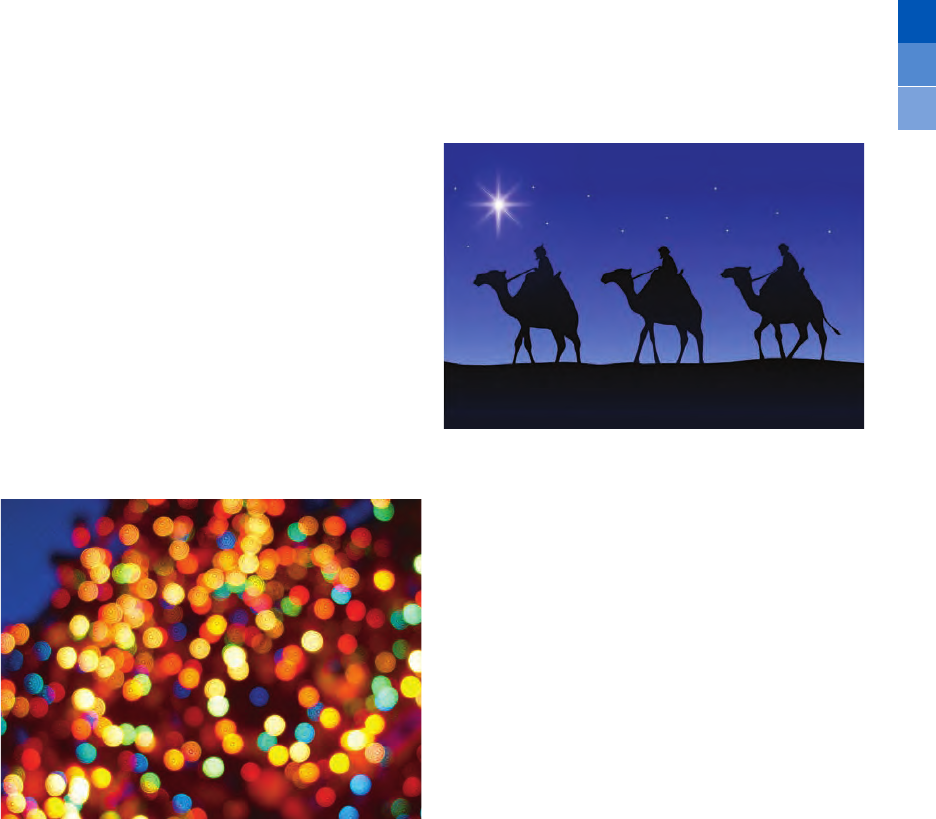
SPACEPARK360
GRADES P | K | 1 | 2 |3 | 4 | 5 | 6 | 7 | 8 | 9 | 10 | 11 | 12+
Riders dip toward molten pools on Io, dodge flying
particles in the rings of Uranus, do a loop-the-loop
through the canyons of Mars and more on nine
different “rides.” Set to popular music by White Zom-
bies, U2, Stealers Wheel, Lenny Kravitz and others,
SpacePark360 is an immersive, all-ages experience
unlike any other.
13
science.cranbrook.edu
LET IT SNOW
GRADES P | K | 1 | 2 |3 | 4 | 5 | 6 | 7 | 8 | 9 | 10 | 11 | 12+
“Let it Snow” features a variety of festive classics
from Frank Sinatra and Chuck Berry to Burl Ives
and Brenda Lee, and includes a stunning multi-
media finale by the Trans-Siberian Orchestra.
The soundtrack is visually enhanced with thematic
animation and all-dome scenery in the audio-
visual setting of the Acheson Planetarium. This
32-minute program is a fun and entertaining experi-
ence for all ages.
Offered Nov. 1–Dec. 22, 2017.
MYSTERY OF THE
CHRISTMAS STAR
GRADES 3 | 4 | 5 | 6 | 7 | 8 | 9 | 10 | 11 | 12+
Journey back to Bethlehem as we examine the
possible scientific explanation for the Star the Magi
followed to find the baby Jesus. Using recorded
sightings of significant astronomical occurrences
during related historical events, we’ll investigate
possible dates for the birth of Jesus. This astro-
nomical look at the Christmas story will charm and
captivate audiences of all ages.
Offered Nov. 1–Dec. 22, 2017.
CHRISTMAS LIGHTS!
GRADES
K |
1 | 2 |3 | 4 | 5 | 6 | 7 | 8 | 9 | 10 | 11 | 12+
Dazzling state-of-the-art digital effects are cho-
reographed to favorite wintry tunes and Christmas
music, including: Wizards in Winter (Trans-Siberi-
an Orchestra), Jingle Bell Rock (Bill Haley & The
Comets), Merry Little Christmas (Tony Bennett),
Rudolph the Red-nosed Reindeer (Gene Autry),
White Christmas (Bing Crosby), Winter Wonderland
(Dean Martin), and more.
Offered Nov. 1–Dec. 22, 2017.
SPACEPARK360:
LUCID DREAMING EDITION
GRADES P | K | 1 | 2 |3 | 4 | 5 | 6 | 7 | 8 | 9 | 10 | 11 | 12+
The same great visuals as SpacePark360 but this
time set to the infectious music of A Burning
Century, an Atlanta-based alternative-rock-
electronica band with a sound that combines
soaring melodies with hard-hitting rhythms.
Lucid Dreaming, the debut album from A Burning Century,
is available for purchase in the Science Shop.
ENTERTAINMENT
ASTRONOMY & SPACE SCIENCE
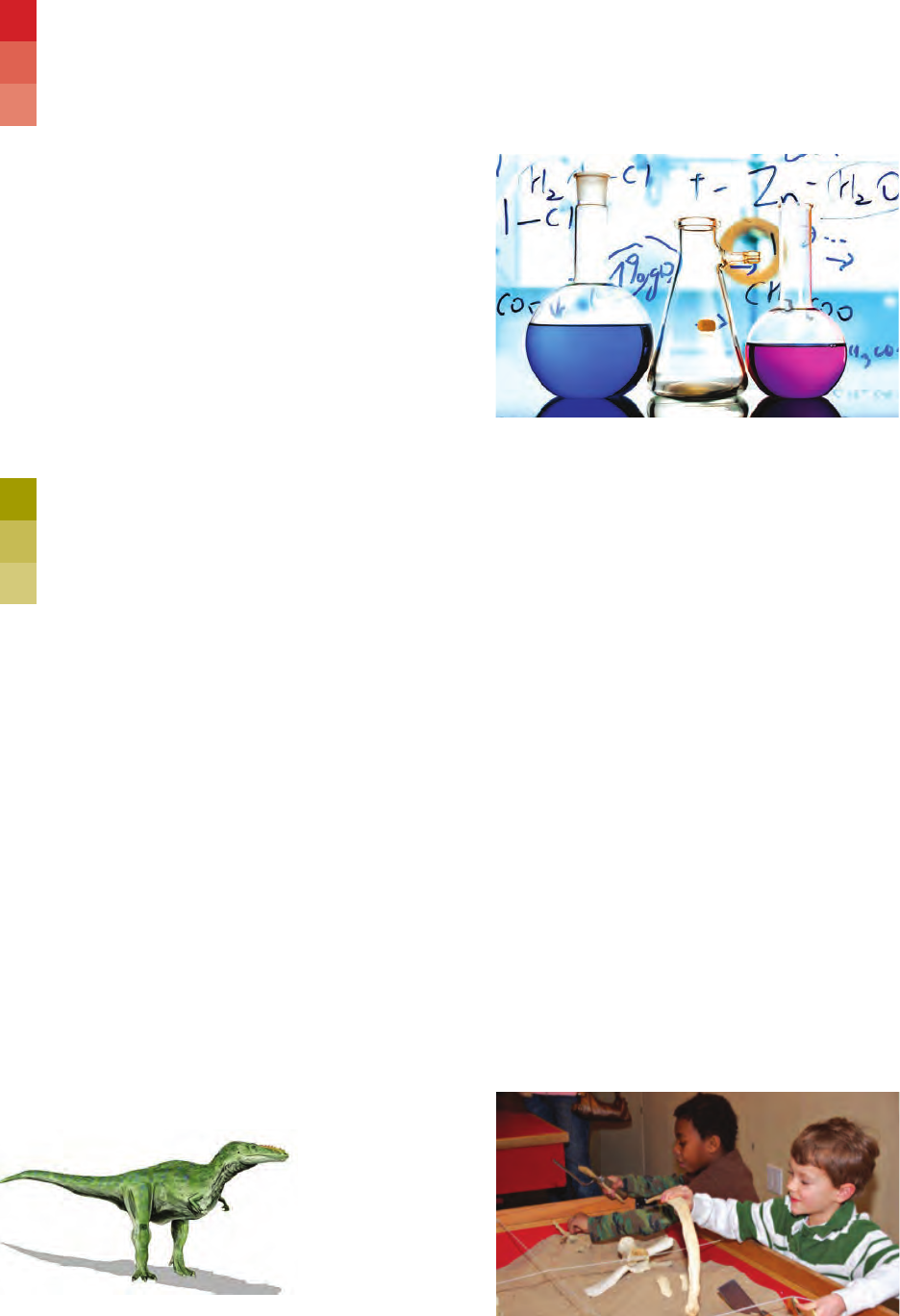
DINOSAURS
GRADES
3 | 4 | 5 | 6 | 7 | 8 | 9 | 10 | 11 | 12+
Use scientific reasoning to explore the behavior,
biology, ecology and evolution of dinosaurs through
examination of fossil bones, eggs and casts, includ-
ing complete skeletons and large skulls. Evaluate
the evidence for dinosaur extinction theories and
the relationships
between dinosaurs, birds
and reptiles. Use the
geologic time scale to trace the
range of dinosaurs and humans
in Earth history.
EARTH SCIENCE
Ever Wonder What's Below the Ground We See?
FROM CRUST TO CORE, EARTH SCIENCE EXPLORES OUR HOME
DINOSAUR TALE
GRADES
P | K | 1 | 2
Travel back in time to visit the land of the dinosaurs.
Students gain hands-on experience with genuine
coprolites, bones, and teeth, and casts of claws,
spikes, skulls, and more. Students simulate a fossil
dig and learn the skills and tools of the Institute’s
paleontologist.
CONTINENTAL DRIFT
TO PLATE TECTONICS
GRADES
5 | 6 | 7 | 8 | 9 | 10 | 11 | 12+
Explore and evaluate Alfred Wegener’s evidence for
continental drift and the existence of the supercon-
tinent Pangaea with numerous rocks, fossils and
casts from Antarctica, Africa and Australia. See how
new technology and exploration of the deep oceans
provided further evidence for the theory of plate
tectonics, including how the theory explains the
present day distribution of earthquakes, volcanoes,
mountains, rift valleys, rocks and minerals—includ-
ing plate tectonic events that occurred in Michigan
over 1 billion years ago!
DINOSAURS AT DUSK
GRADES
3 | 4 | 5 | 6 | 7 | 8 | 9 | 10 | 11 | 12+
Take to the skies and discover the origins of flight
with a father and his teenage daughter who share
a fascination for all things that fly. Navigate with
them across continents, meet the ancestors of
modern-day birds — the feathered dinosaurs —
and experience the cataclysmic “last day” of
the dinosaurs.
This program takes place in the Acheson Planetarium.
14
248 645.3210
CHEMISTRY
What is Matter?
JOIN IN THE LEGO
®
FUN AND DISCOVER HOW ATOMS INTERACT, COMBINE AND CHANGE!
CHEMICAL REACTIONS – NEW
LEGO® Bricks Program
GRADES
6 | 7 | 8
A fun introduction to molecules, atoms, chemi-
cal notation, and chemical compounds! Students
will manipulate LEGO® Brick models of atoms to
demonstrate chemical reactions. This program can
be used as both an introduction to chemistry, en-
richment for students with a basic understanding,
or as an end lesson when students have completed
their chemistry lessons.
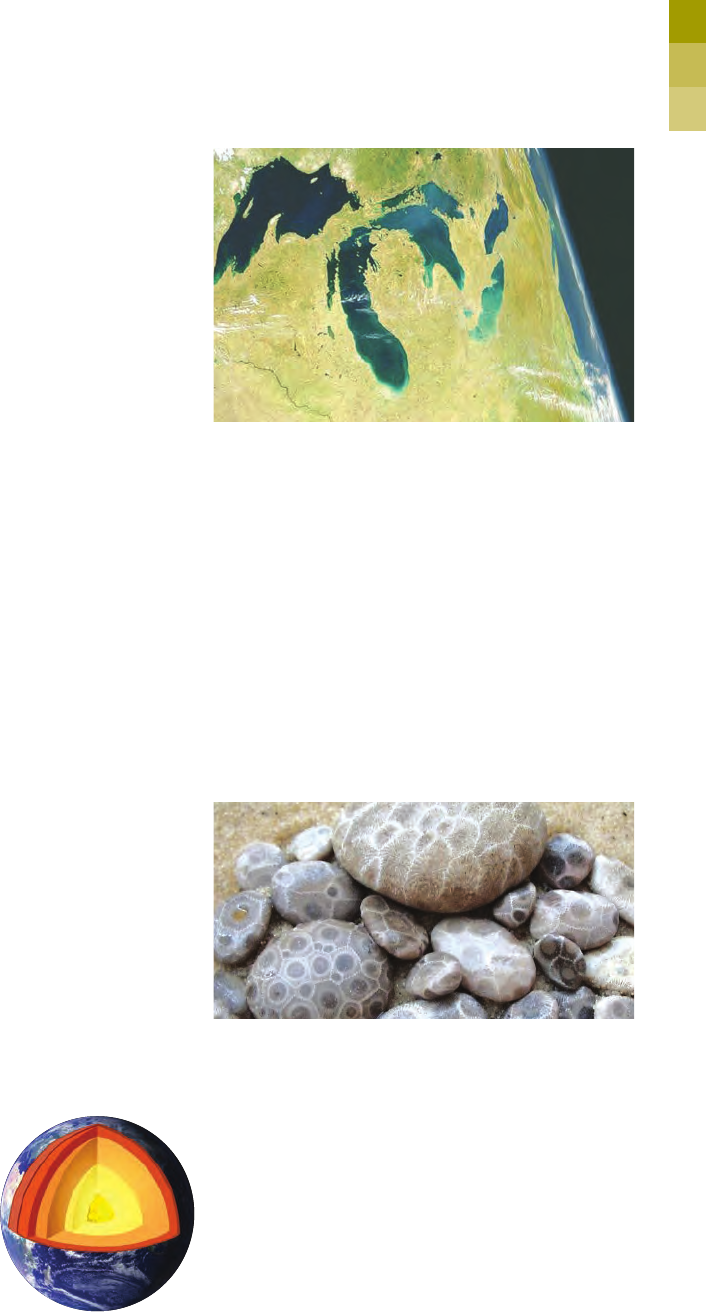
JOURNEY TO THE
CENTER OF THE EARTH
GRADES
1 | 2 | 3 | 4 | 5 | 6 | 7 | 8 | 9 | 10 | 11 | 12+
Take an incredible customized 4,000 mile journey
from the site of your school to the center of the
Earth. See the sediments and handle the rocks, min-
erals, gems and fossils that would be encountered
along the way. Discover how geologists interpret
geologic evidence and what the
rocks and sediments reveal
about Earth System history
and natural resources in
your community. Evaluate
how and what we know
about the deep structure and
origin of our planet, its source
of internal heat and magnetic field.
EARTH SYSTEM SCIENCE
GRADES
6 | 7 | 8 | 9 | 10 | 11 | 12+
Compare Earth to the other rocky planets and use
satellite images and rock and mineral specimens
to better understand our planet as a system driven
by the Sun and internal geothermal heat. Discover
how aspects of physical and chemical changes and
solid Earth processes—plate tectonics, volcanism
and rock weathering—are linked to the atmosphere,
oceans, biosphere and global climate, including
the growing role of humanity as a major force in
the system.
ORIGIN OF THE GREAT LAKES
GRADES
4 | 5 | 6 | 7 | 8 | 9 | 10 | 11 | 12+
Use rocks, fossils and geologic maps to discover
how ancient continental rift valleys, shallow tropical
seas, folded rock layers and great flowing ice sheets
combined to produce the Great Lakes basins. Dis-
cover the fascinating story of the postglacial evo-
lution of local watersheds and related ecosystems,
including the extinct mastodon community and
early Paleo-Indian hunters. Evaluate the importance
of these unique freshwater lakes and the potential
problems posed to this resource and its biota by
invasive species, diversion, and pollution.
EARTH SCIENCE
15
science.cranbrook.edu
ICE AGE MICHIGAN AND
THE BIG MELTDOWN – NEW
GRADES
4 | 5 | 6 | 7 | 8 | 9 | 10 | 11 | 12+
Explore the ice age and its influence on the
modern world through direct study of the local
surface rocks, landforms and sediments of south-
east Michigan; including the transition to our warm
climate period shown by fossil plants and extinct
megafauna (mammoths and mastodons), and
other specimens from Cranbrook’s collections.
Offered Jan. 9–June 8, 2018. This program takes place
in Explore Lab, the Institute’s newest experiential
learning space. There is a $1 up charge per student
for this program.
SAVAGE SEAS – NEW
GRADES
4 | 5 | 6 | 7 | 8 | 9 | 10 | 11 | 12+
Investigate the evidence from specimens of the
underlying sedimentary bedrock of southern
Michigan for prehistoric tropical seas through
exploration of fossils and their paleoecology,
including an ancient mass extinction and the origin
of related natural resources in the local bedrock.
Offered Jan. 9–June 8, 2018. This program takes place
in exploreLab, the Institute’s newest experiential learning
space. There is a $1 up charge per student for this
program.
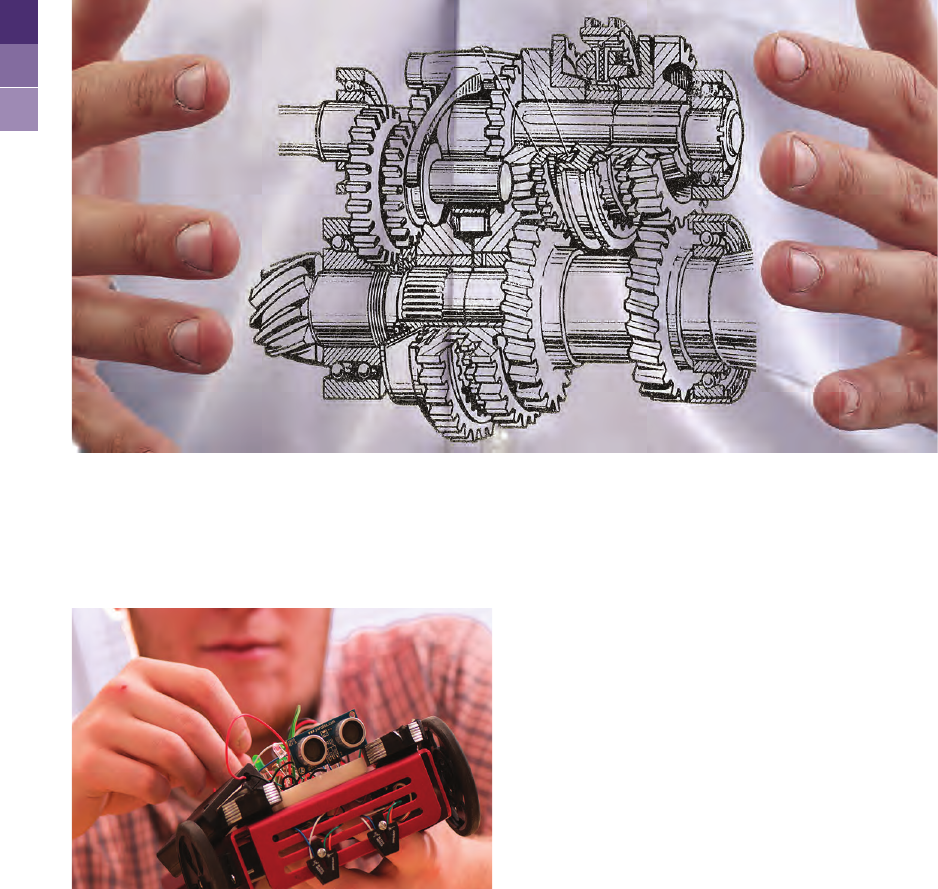
ENGINEERING
ENGINEERING USES ART, MATH AND TECHNOLOGY TO DESIGN SOLUTIONS.
16
248 645.3210
How Do We Solve Problems?
APPROACHES TO
PROBLEM SOLVING – NEW
GRADES
4 | 5 | 6 | 7 | 8
Students explore a variety of approaches and tools
to design solutions to everyday problems. Students
will be encouraged to inquire, investigate, commu-
nicate, imagine, design and build prototypes of their
solutions. Problem solving is a continuous process
that requires students to fail often, and fail early.
This program will empower the students to take on
any problem.
There is a $3 up charge per student for this program.
FROM DREAM TO DISCOVERY:
INSIDE NASA ENGINEERING - NEW
GRADES
3 | 4 | 5 | 6 | 7 | 8 | 9 | 10 | 11 | 12+
Experience the challenges of the next generation
of space exploration in this brand-new immersive
program in the Acheson Planetarium. By using
exciting real-life projects like NASA’s James Space
Telescope and the New Horizons mission to Pluto,
the show highlights the extreme nature of space-
craft engineering and the life cycle of a space
mission—from design and construction to the rigors
of testing, launch, and operations. Blast off and
take the voyage with us! This program also contains
an interactive segment that allows participants to
assist in the design of a virtual space mission.
From Dream to Discovery is made possible by the
generous support of the Baiardi Family Foundation.
This program takes place in the Acheson Planetarium.
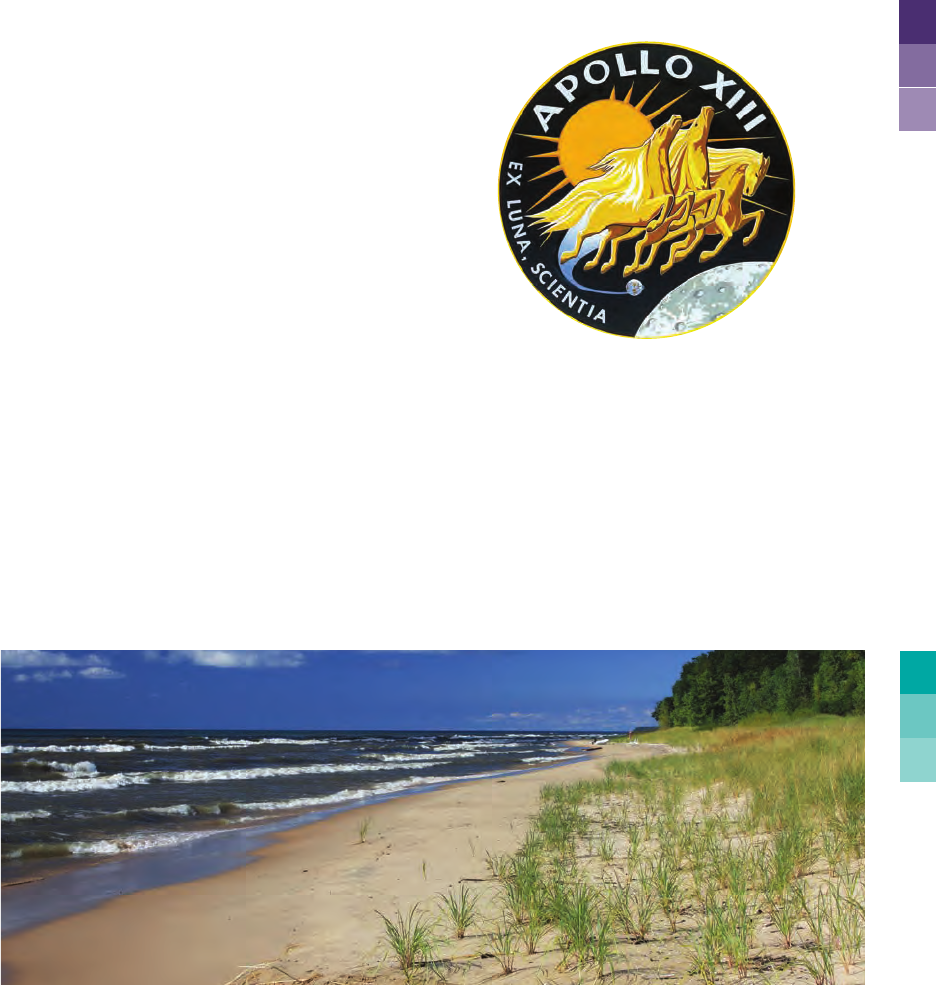
17
science.cranbrook.edu
PEGBOARD CHALLENGE
GRADES
5 | 6 | 7 | 8
Learn about one of NASA's greatest problem-
solving moments when engineers fit a "square peg
into a round hole" and saved the Apollo 13 lunar
mission crew. Then test problem-solving skills by
assembling a track to guide a ball around obstacles
and across a board using a limited set of tools. This
program stresses engineering skills and thinking
out-of-the-box.
FROM LEVERS TO LIFT-OFF
GRADES
5 | 6 | 7 | 8 | 9 | 10 | 11 | 12+
Engineering: From Levers to Lift-off is an
education-focused program that explores many
of humanity’s engineering accomplishments
throughout recorded history. This exciting program
explains each STEM focus area (Science, Technol-
ogy, Engineering and Math) through real-world
applications—from the development of the simple
lever and the catastrophic power of medieval siege
engines to space flight.
Set in the Institute’s Acheson Planetarium and other
demonstration areas, Engineering: From Levers to
Lift-off will take students on a journey of discovery and
investigation to help them better understand how
humanity achieved amazing engineering feats by using
imagination and know-how. There is a $5 up charge per
student for this program. Engineering: From Levers to
Lift-off is made possible by the generous support of the
Baiardi Family Foundation.
LIFE SCIENCE & ECOSYSTEMS
What is Biodiversity?
LIFE SCIENCE REVEALS THE INTERCONNECTEDNESS OF ALL LIVING THINGS.
ANIMAL DIVERSITY
GRADES 4 | 5 | 6 | 7 | 8 | 9 | 10
What are the most numerous animals on Earth?
Learn about different animal species and their
relative abundances. Examples from the Institute’s
collections illustrate the wide variety of life forms.
Students sort and classify their animals to discover
Earth’s least appreciated, but most diverse
organisms.
DNA STRUCTURES
AND REPLICATION – NEW
GRADES
6 | 7 | 8 | 9 | 10 | 11 | 12+
Students build and manipulate a 3-D model DNA
from the smallest nucleotides to a completed DNA
double helix. Explore the replication process using
this hands on model. Students will understand the
process of replication from start to finish and the
terms associated with the process.
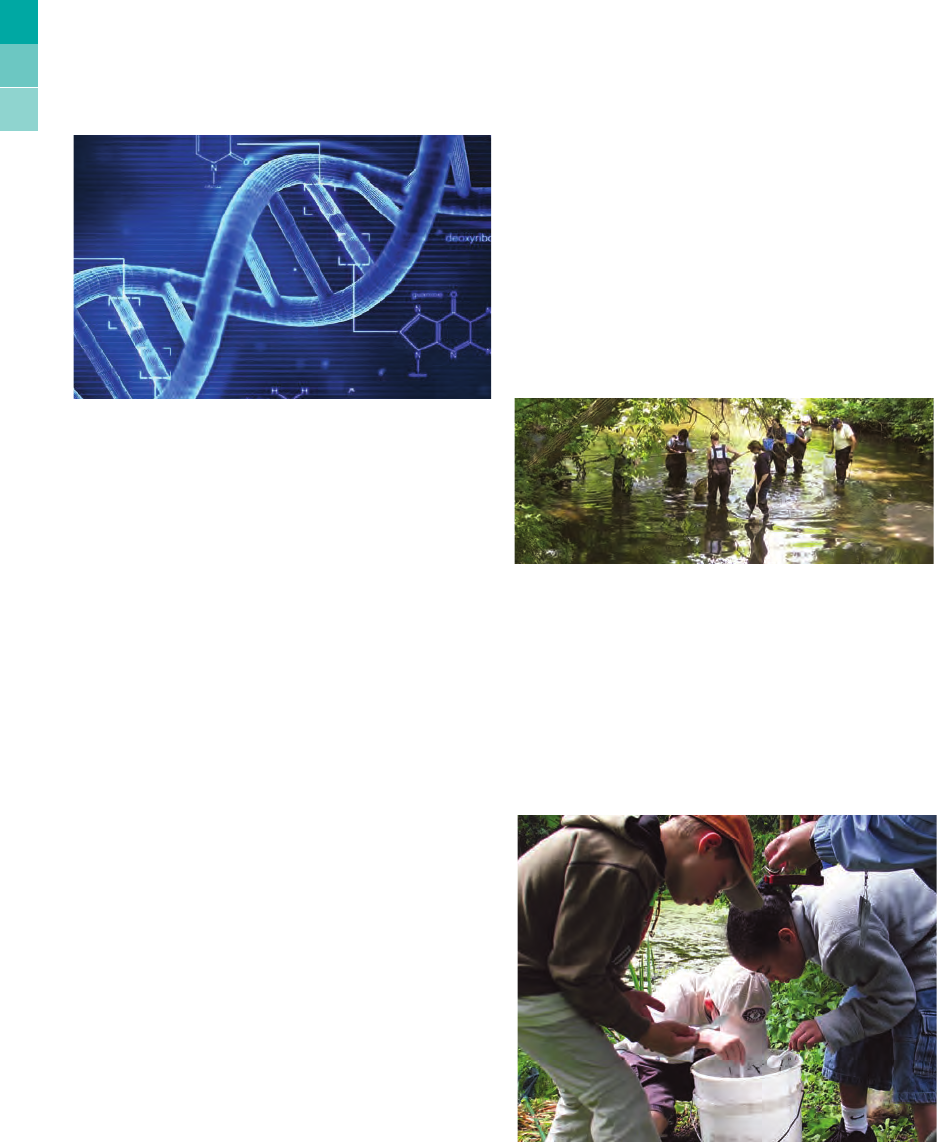
18
248 645.3210
LIFE SCIENCE & ECOSYSTEMS
TRANSCRIBING DNA
AND RNA – NEW
GRADES
6 | 7 | 8 | 9 | 10 | 11 | 12+
Learn and explore how we go from DNA to protein
using hands-on manipulatives. Students will have a
greater understanding for how mRNA is different
than DNA, how to transcribe and translate DNA, and
the importance of proteins to our everyday lives.
GREAT LAKES FOOD WEB
GRADES
4 | 5 |6 | 7 | 8 | 9 | 10 | 11 | 12+
A complex food web connects plants and animals
in the Great Lakes. Students discover producers,
consumers and decomposers and how they are
linked to one another. They discuss how habitat
loss, invasive species and pollution have affected
animals, and what can be done to protect and
restore the Great Lakes for them.
Offered Oct. 3- Dec. 22, 2017, and Mar. 1-June 8, 2018.
HOW WE USE WATER
GRADES
2 | 3 | 4 | 5 | 6 | 7 | 8 | 9 | 10 | 11 | 12+
Take a journey through the water cycle from the
Earth’s surface to atmosphere and back again.
Students learn about the Great Lakes as the
most significant freshwater ecosystem on Earth.
Demonstrations and hands-on activities reveal how
precious the Earth’s freshwater is and what we can
do to conserve it.
I LIVE IN A WATERSHED
GRADES
5 | 6 | 7 | 8 | 9 | 10 | 11 | 12+
Learn about your watershed and how to protect it
from pollution. Working in groups, students create
a model community to develop an understanding
of the ways in which land use impacts the water
quality of local rivers and streams, and ultimately,
the Great Lakes.
MICHIGAN ECOSYSTEMS
GRADES
4 | 5 | 6 | 7 | 10 | 11 | 12+
Investigate the diversity of Michigan’s ecosystems.
Students work in groups to design a food web
in one of six different ecosystems. They explore
the interrelationships between biotic and abiotic
factors and how energy flows through food webs to
sustain life in any ecosystem.
DECODING DNA – NEW
GRADES
6 | 7 | 8 | 9 | 10 | 11 | 12+
Decoding DNA will allow students to manipulate
physical models of DNA. They will understand
how to describe and build a DNA codon and how
codons group together to create a gene. They will
then learn how to decode a gene to describe how
codons work together to create a functioning gene.
Students will gain a better understanding for how
DNA leads to our, or other organisms, genome that
makes each of us unique.
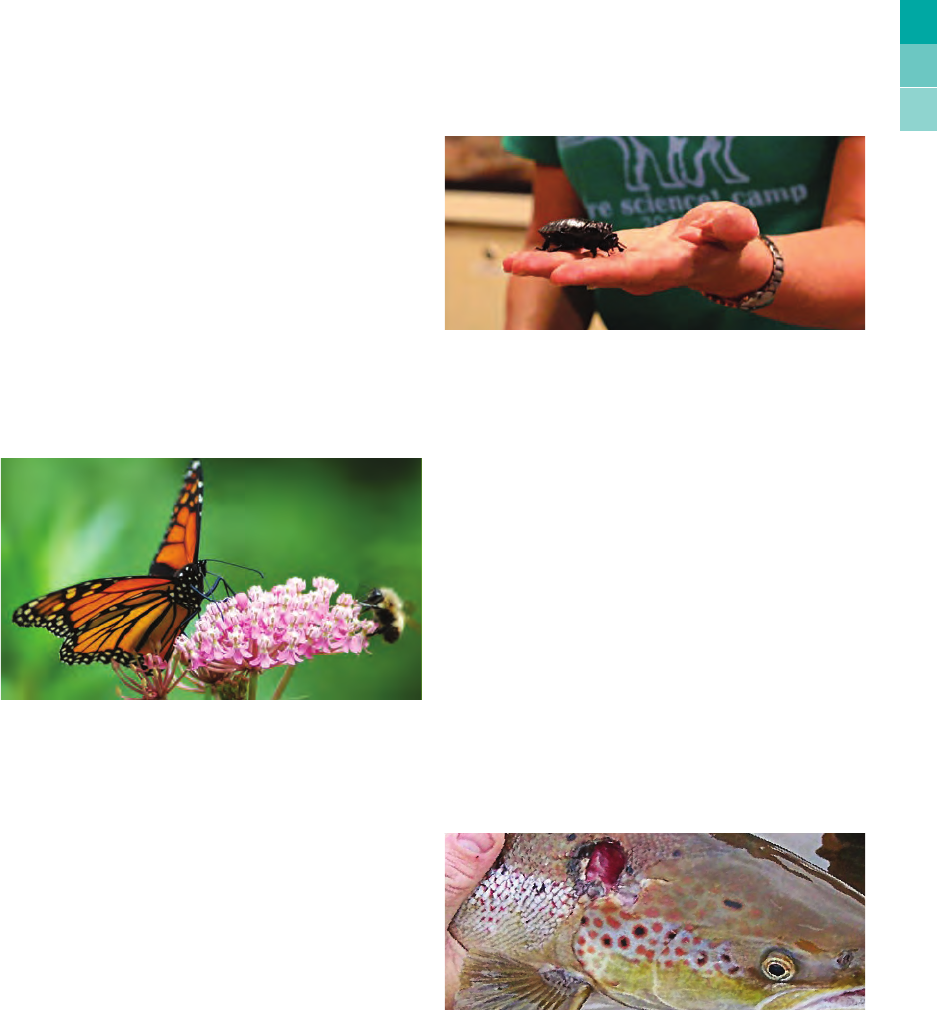
19
science.cranbrook.edu
NATURAL SELECTION
GRADES
6 | 7 | 8 | 9 | 10 | 11 | 12+
Join the young Charles Darwin on his adventurous
voyage of exploration. Witness the thrill of scientific
discovery through Darwin’s eyes, make observa-
tions of the most beautiful natural scenery, and see
the pieces of the scientific puzzle fall into place.
Darwin himself reveals the simple and most beauti-
ful mechanism that explains the evolution of all life
on Earth: Natural Selection.
This program takes place in the Acheson Planetarium.
OUTDOOR SCAVENGER WALK
GRADES
P | K | 1 | 2 | 3 | 4 | 5
What do living things need to survive? How do
living and non-living things fit together in an
ecosystem? Explore the Institute’s trails on a guid-
ed tour and trace the path of resources through dif-
ferent ecosystems. From autumn’s browning leaves
to springtime buds and summer tadpoles, observe
seasonal changes across Cranbrook’s 319 acres.
Offered Oct. 3–Nov. 21, 2017 and Apr. 11–June 8, 2018.
Program occurs outdoors; dress appropriately for the
weather.
PHOTOSYNTHESIS – NEW
LEGO® Bricks Program
GRADES
6 | 7 | 8
Experience a photosynthesis reaction by using
LEGO® Bricks to model both the reactants and
products. Students will construct various molecules
important to the plant and discover that most of a
plants mass comes from air and water, rather than
from soil.
WEBS, WINGS, AND
CRAWLING THINGS – NEW
GRADES
P | K | 1 | 2 | 3 | 4 | 5 | 6
Investigate the world of insects, arachnids and
myriapods! Get up close with these fascinating
creatures in this interactive, live arthropod pro-
gram. Engage in age-appropriate explorations of
adaptations, plants, life cycles, heredity, habitats,
and more!
UNDERSTANDING AIR – NEW
LEGO® Bricks Program
GRADES
6 | 7 | 8
Construct physical models of air using LEGO Bricks.
Students will then “combust” them to produce car-
bon dioxide and air pollutants. Students will discuss
the impacts that this may have upon air quality and
the environment.
YOU, ME, AND THE BLUE PLANET
GRADES
4 | 5 | 6 | 7 | 8 | 9 | 10 | 11 | 12+
Did you know that our actions impact the quality
of water in the lakes, rivers and streams in our
communities, and the Great Lakes? From Zebra
Musselsto Phragmites and microbeads, many
plants, animals, and foreign substances have been
introduced to the Great Lakes region with harmful
effects to its ecosystems. Learn how WE can work
together to protect our most precious resource:
water. Students will examine samples collected
throughout Michigan and consider ways they
can help.
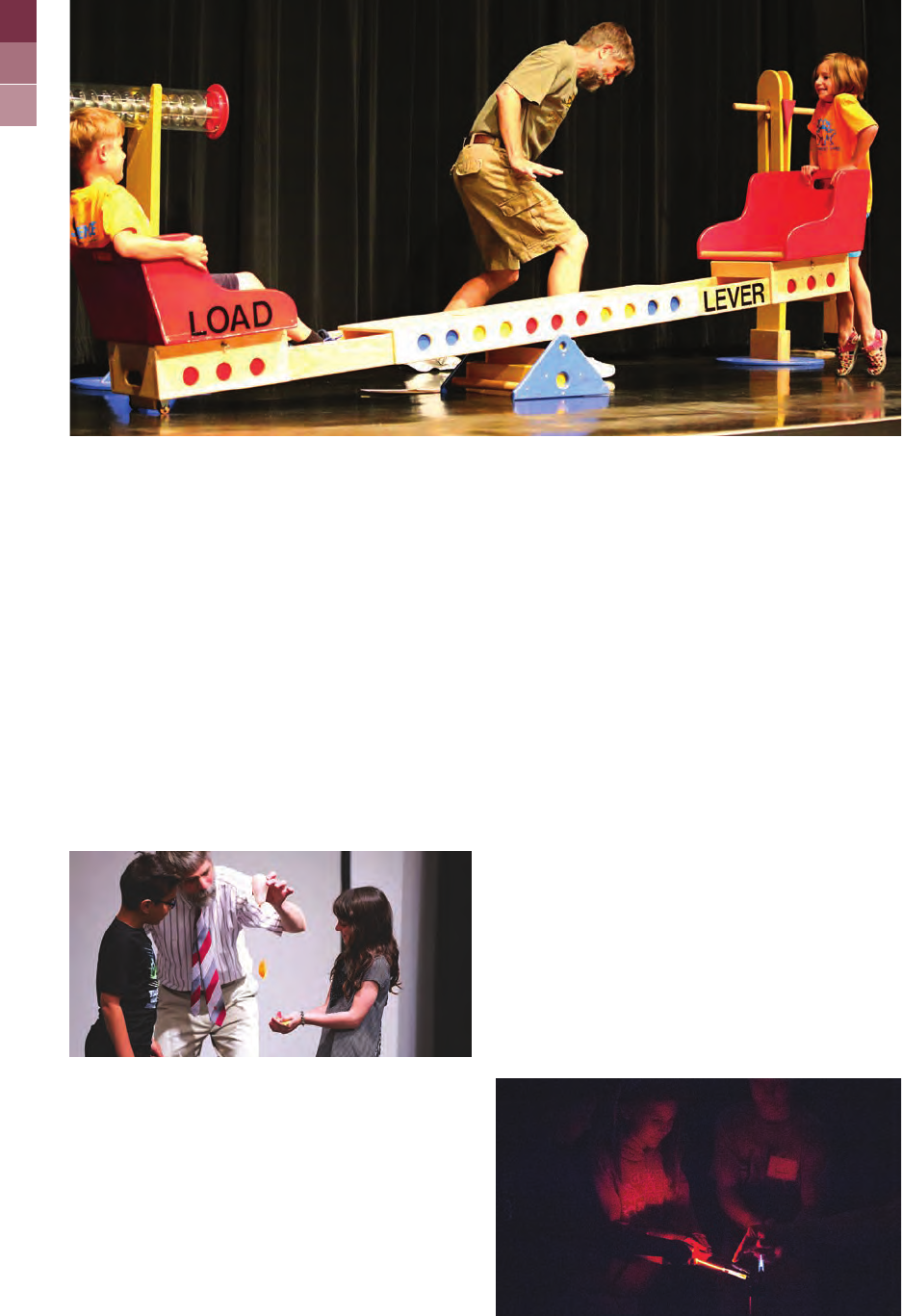
20
248 645.3210
PHYSICAL SCIENCE
How Does That Work?
DISCOVER THE SCIENCE OF THE WEATHER, PHYSICS, MATTER AND ELECTRICITY
THAT SURROUNDS US EVERY DAY
ELECTRICITY AND MAGNETISM
GRADES
2 | 3 | 4 | 5 | 6 | 7 | 8
Examine the properties of magnets and how they
act with common materials and with each other.
Investigate the discovery of electricity and its con-
nection with atoms. Create a human magnet and a
human circuit, perform a hair-raising experiment,
and generate lightning to observe how electricity
and magnetism interact with matter.
FORCES AND MOTION
GRADES
K | 1 | 2 | 3 | 4 | 5 | 6
Investigate matter and the qualities scientists use
to classify it as solid, liquid, or gas. Understand
how to make work easier by applying pushes and
pulls on simple machines like levers, pulleys, and
inclined planes. Lots of activities including student
volunteers and hands-on demonstrations make this
a "moving" experience!
INQUIRY INVESTIGATION
GRADES
P | K | 1 | 2 | 3
Utilize this inquiry-based experience to explore the
concept of what causes objects to move. As stu-
dents study cause and effect relationships, they will
practice the scientific process by asking questions,
making observations, exploring materials, making a
plan and communicating their ideas.
LIGHT AND SOUND
GRADES
1 | 2 | 3 | 4 | 5 | 6 | 7 | 8
Focus on the physics of waves as we explore and
describe the properties of light and sound. Discover
how these forms of energy are created, measured,
and controlled. Hands-on activities and student par-
ticipation with percussion tubes, spectrum tubes,
and more reveal the fascinating facts about these
everyday phenomena.
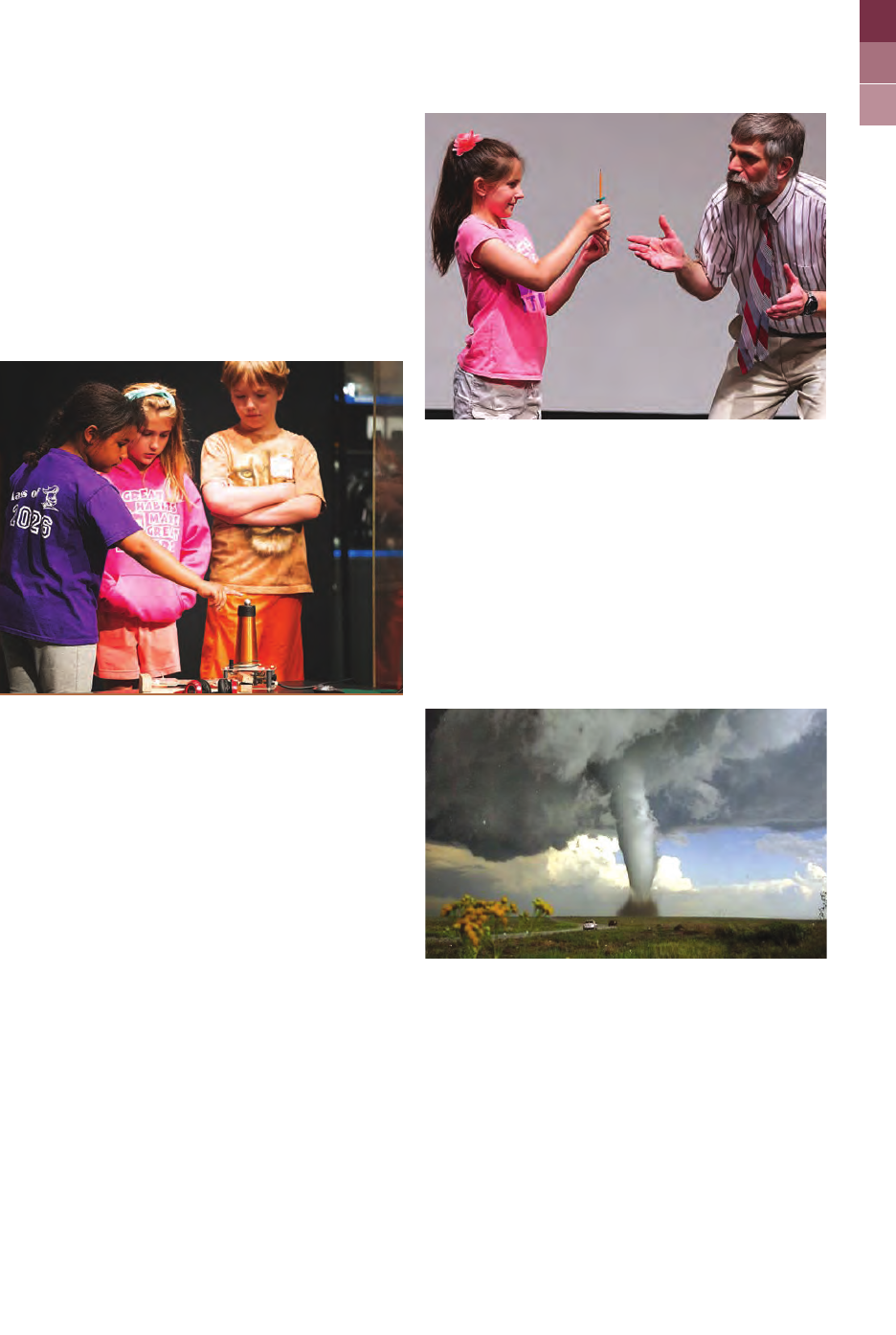
21
science.cranbrook.edu
WAVES AND ENERGY – NEW
GRADES
6 | 7 | 8
Students will gain a greater understanding for
where our energy comes from and how it travels to
Earth. Working in pairs, they manipulate a pendu-
lum to model a wave and discuss various phenom-
ena that deal with waves and energy. Students will
also each go home with a special pair of glasses
that allows them to see some of these waves any-
where they go.
PHYSICS OF FLING!
GRADES
2 | 3 | 4 | 5 | 6 | 7 | 8 | 9 | 10 | 11 | 12+
Demonstrate the power of physics using the
Institute’s three-ton trebuchet. Capable of launching
a large pumpkin the length of a football field
or more, Cranbrook’s trebuchet is an awesome
tool to demonstrate the principle of conservation
of energy, the mathematical nature of projectile
motion and the basic laws of kinematics in
engaging and inspiring ways.
This amazing program is offered in three ways:
1. Two hours at your school
2. Two hours at the Institute of Science
3. One hour at your school and one hour at the
Institute (on separate days).
Each program includes a classroom component that
involves the use of a model trebuchet as well as
the hands-on use of the full-scale trebuchet. This
program requires even terrain and approximately
75 yards of down-range distance. Some classroom
components for lower grades are not transportable
and require a museum visit.
See page 5 for pricing.
MATTER AND ENERGY
GRADES
1 | 2 | 3 | 4 | 5 | 6 | 7 | 8
Learn how scientists classify common materials
through an emphasis on water, then explore "weird"
substances that blur the boundaries between states
of matter. Apply light, heat, electricity, and other
forms of energy to matter and behold the results.
Finish with a BANG when we change chemical
potential energy into kinetic energy!
WEATHER
GRADES
4 | 5 | 6 | 7 | 8
See how solar energy drives our climate and dis-
cover the circumstances that influence our daily
weather. Become a meteorologist by using current
Internet data to create a forecast. Explore violent
weather and learn how to protect yourself during
storms. Watch lightning strike before your very
eyes!
PHYSICAL SCIENCE

SMALL GROUP PROGRAMS
Small group programs work well
for up to 30 students. Choose
from a variety of topics, covering
anthropology, astronomy, earth
science, fluid earth, physics and
life science.
22
248 645.3210
SCIENCE ON GO!
We're Bringing A Field Trip To Your School!
SCIENCE ON THE GO! PROGRAMS ARE AVAILABLE YEAR-ROUND! CRANBROOK INSTITUTE
OF SCIENCE COMES TO YOU TO HOST A FIELD TRIP IN YOUR SCHOOL! INSTITUTE EDUCATORS
SHARE THEIR EXCITEMENT OF SCIENCE WITH INVESTIGATIVE MATERIALS AND FUN PROPS
THAT PROMISE TO ENGAGE YOUR STUDENTS!
CHEMICAL REACTIONS – NEW
LEGO® Bricks Program
GRADES
6 | 7 | 8
A fun introduction to molecules,
atoms, chemical notation, and
chemical compounds! Students will
manipulate LEGO® Brick models
of atoms to demonstrate chemical
reactions. This program can be used
as both an introduction to chemistry,
enrichment for students with a basic
understanding, or as an end lesson
when students have completed their
chemistry lessons.
CONTINENTAL DRIFT TO
PLATE TECTONICS – NEW
GRADES
5 | 6 | 7 | 8 | 9 | 10 | 11 | 12+
Explore and evaluate Alfred Wege-
ner’s evidence for continental drift
and the existence of the superconti-
nent Pangaea with numerous rocks,
fossils and casts from Antarctica,
Africa and Australia. See how new
technology and exploration of the
deep oceans provided further
evidence for the theory of plate
tectonics, including how the theory
explains the present day distribution
of earthquakes, volcanoes, moun-
tains, rift valleys, rocks and minerals—
including plate tectonic events that
occurred in Michigan over 1 billion
years ago!
DNA STRUCTURES
AND REPLICATION – NEW
GRADES
6 | 7 | 8 | 9 | 10 | 11 | 12+
Students build and manipulate a 3-D
model DNA from the smallest nucle-
otides to a completed DNA double
helix. Explore the replication process
using this hands on model. Students
will understand the process of replica-
tion from start to finish and the terms
associated with the process.
DECODING DNA – NEW
GRADES
6 | 7 | 8 | 9 | 10 | 11 | 12+
Decoding DNA will allow students to
manipulate physical models of DNA.
They will understand how to describe
and build a DNA codon and how co-
dons group together to create a gene.
They will then learn how to decode
a gene to describe how codons work
together to create a functioning gene.
Students will gain a better under-
standing for how DNA leads to our, or
other organisms, genome that makes
each of us unique.
TRANSCRIBING DNA
AND RNA – NEW
GRADES
6 | 7 | 8 | 9 | 10 | 11 | 12+
Learn and explore how we go from
DNA to protein using hands-on
manipulatives. Students will have
a greater understanding for how
mRNA is different than DNA, how to
transcribe and translate DNA, and
the importance of proteins to our
everyday lives.
DINOSAURS
GRADES
P | K | 1 | 2 | 3
Hold a dinosaur fossil, learn how
dinosaurs adapted to their surround-
ings and dig for fossils like a paleon-
tologist in this program designed for
younger students.
ELECTRICITY
GRADES
3 | 4 | 5 | 6 | 7 | 8
Examine the nature of electricity by
modeling electron flow, building
circuits and exploring generators.
Investigate the many ways that
electricity impacts our lives and how
different forms of energy are
converted into electrical energy.
HOW WE USE WATER
GRADES
4 | 5 | 6 | 7 | 8
Learn about the Great Lakes as one
of the most important freshwater
resources on Earth. Join us on a
journey through the water cycle from
the Earth’s surface to atmosphere
and back again. Demonstrations and
hands-on activities reveal how vital
the Earth’s fresh water is and what we
can do to conserve it. For more infor-
mation about water, curriculum, and
links visit greatlakeswatershed.org.
I LIVE IN A WATERSHED
GRADES
5 | 6 | 7 | 8
Learn about your watershed and how
to protect it from pollution. Working
in groups, students create a model
community to develop an understand-
ing of the ways in which land use im-
pacts the water quality of local rivers
and streams, and ultimately, the
Great Lakes.
INQUIRY INVESTIGATION
GRADES
PK | K | 1 | 2 | 3
Utilize this inquiry-based experience
to explore the concept of what causes
objects to move. Students practice
the scientific process by asking
questions, making observations,
exploring different materials, and
communicating their ideas.

LARGE GROUP PROGRAMS
Large group programs work well
for groups of up to 150 students
and provide an up-close look at
the physical sciences.
23
science.cranbrook.edu
FORCE AND MOTION
GRADES
K | 1 | 2 | 3 | 4 | 5 | 6 | 7 | 8
Examine the how and why of motion,
including forces, velocity, momentum,
and Newton’s Laws of Motion by using
a trebuchet, hovercraft, sonar unit
and more.
INVESTIGATING LIGHT
GRADES
2 | 3 | 4 | 5 | 6
Students conduct experiments that
illustrate principles of light, shadows,
color, reflection, refraction and more
in this brilliant program.
IT’S A SMALL WORLD!
GRADES
PK | K | 1 | 2 | 3
Investigate the small world of insects
and arachnids. Use models, micro-
scopes, and live samples to explore
the similarities and differences
between insects and arachnids.
Develop an understanding of the
importance of the small living world
around us.
MICHIGAN ECOSYSTEMS
GRADES
4 | 5 | 6 | 7
Investigate the diversity of Michigan’s
ecosystems. Explore six different
Michigan ecosystems and construct a
food web among the biotic and abiotic
factors in the ecosystems. Examine
the interrelationships between these
factors and how energy flows through
the food webs to sustain life in any
ecosystem and uncover the many
ways humans impact nature.
MONEY!
GRADES
2 | 3 | 4 | 5
Beg, barter and buy with this enjoy-
able introduction to the principles of
economies and fiscal responsibility.
THE PEOPLE OF
THE THREE FIRES
GRADES
2 | 3 | 4 | 5 | 6
Discover Michigan’s rich culture and
history of the Ojibway, Ottawa and
Potawatomi tribes through interactive
activities and authentic artifacts.
ROCKS, MINERALS & FOSSILS
GRADES
3 | 4 | 5 | 6 | 7 | 8
Using Cranbrook’s world-class rock
and mineral collection and authentic
fossils, students will learn about the
formation of rocks and minerals.
Students will explore evidence that
confirms that Michigan was once
covered by an ocean.
STARLAB
GRADES K
| 1 | 2 | 3 | 4 | 5 | 6 | 7 | 8
Enter our portable planetarium
and journey through the night sky
discovering distant stars, planets and
constellations. Immerse yourself in
the lore behind the pictures in
the sky.
WATER, WATER, EVERYWHERE
GRADES
2 | 3 | 4
Act out the water cycle, make a cloud
in a bottle, view the effects of pollu-
tion on groundwater and understand
the many ways that we use water with
this interactive program that’s bound
to make a splash.
WAVES AND ENERGY – NEW
GRADES
6 | 7 | 8
Students will gain a greater under-
standing for where our energy comes
from and how it travels to Earth.
Working in pairs, they manipulate
a pendulum to model a wave and
discuss various phenomena that deal
with waves and energy. Students will
go home with a special pair of glasses
that allow them to see light waves
anywhere they go.
MATTER AND ENERGY
GRADES
2 | 3 | 4 | 5 | 6 | 7 | 8
Learn how scientists classify common
materials with emphasis on water,
and then explore “weird” substances
that blur the boundaries between
states of matter. Apply light, heat,
electricity and other forms of energy
to matter and observe the results. We
finish with a BANG when we change
chemical potential energy into kinetic
energy!
SIMPLE MACHINES
GRADES
K | 1 | 2 | 3 | 4 | 5
Explore how simple machines can
help us perform work in this stage
show with large props and audience
participation.
SPECIAL EVENTS
Bring your school community togeth-
er to share in a fun and educational
hands-on experience! Cranbrook Insti-
tute of Science can meet the variety
of needs and interests in your school,
your classroom, and your communi-
ty! Our Science on the Go! programs
are S.T.E.A.M. focused and perfect for
school events, extracurricular clubs,
latch-key programs, and community
and neighborhood events.
CUSTOM SCIENCE FESTIVALS
GRADES
PK | K | 1 | 2 | 3 | 4 | 5 | 6 | 7 | 8+
Personalize your Cranbrook experi-
ence by developing a custom event to
expand students' learning from S.T.E.M.
into S.T.E.A.M. These festivals can occur
either during or after school. Students
and teachers can rotate through the
programs as a whole class or as small
groups. The stations can run from 10
minutes to 30 minutes.
FAMILY SCIENCE NIGHTS
GRADES
PK | K | 1 | 2 | 3 | 4 | 5 | 6 | 7 | 8+
Students and parents can investigate
the scientific world in an engaging
and exciting after school event. Bring
families into your school to cultivate
an interest in science and extend your
students S.T.E.A.M. learning by having
us set up stations based on various
branches of science. Events typically
last two hours and require at least 12
volunteers. Now you can customize
your Family Science Night by selecting
your stations from over forty engaging
options.
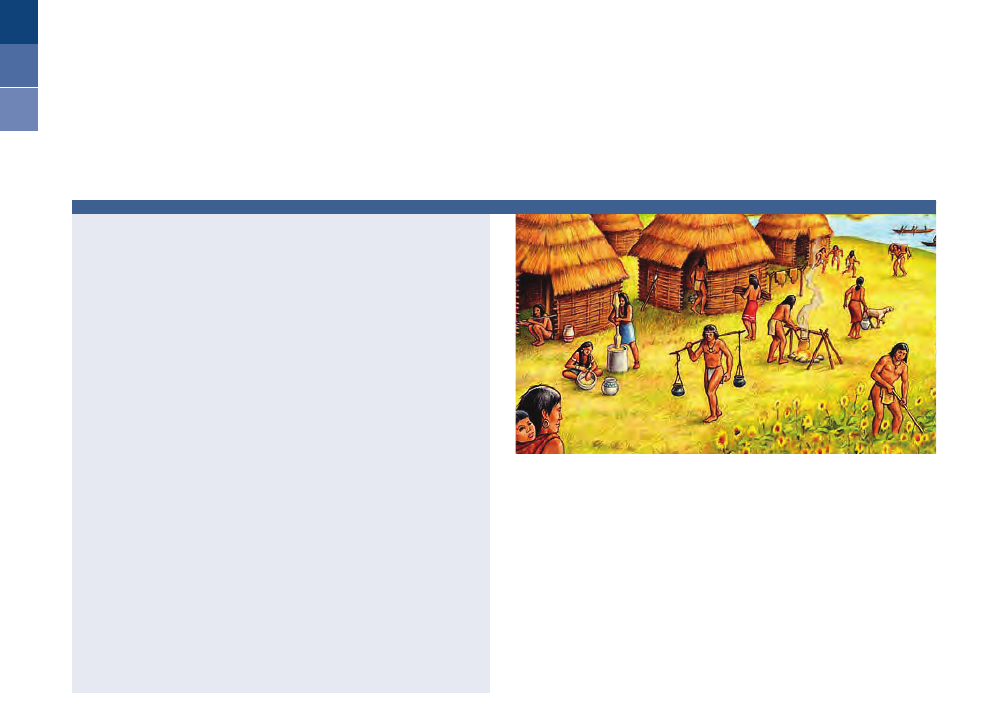
VIRTUAL FIELD TRIPS
Using the latest High Definition videoconferencing
technology, Cranbrook Institute of Science brings
quality science programs directly to your classroom!
• Distance learning enables students to connect with
our scientists and become active participants in
the learning experience.
• Programs address national standards and align
with the NGSS. Each 45-minute program includes
teacher resource information, a session outline and
any required activity kits. You must have video-
conferencing equipment in your school or district
to participate in Science on the Screen! virtual field
trips. Connections are available via ISDN or IP.
For alternate connection options, please
call 248 645.3235.
ASK THE EXPERT –
EXPLORING CAREERS IN THE MUSEUM
GRADES
2 |
3 |
4 | 5 | 6 | 7 | 8 | 9 | 10 | 11 | 12+
Give your students the opportunity to meet a scientist
and discover what it’s like being a paleontologist, an-
thropologist, astronomer or other museum professional.
Every program is unique, as each expert uses multi-media
programs, artifacts, and their own personal experiences
and research to bring their life’s work to your classroom.
NATIVE AMERICA
GRADES
3 |
4 | 5 | 6 | 7 | 8 | 9 | 10 | 11 | 12+
Explore the history and culture of the tribes/nations of
your state or province using artifacts drawn from the
Institute’s collections, historical photographs and docu-
ments. This program is tailored to each group’s interests
based upon grade level and educator requirements.
THE PEOPLE OF THE THREE FIRES
GRADES
3 |
4 | 5 | 6 | 7 | 8 | 9 | 10 | 11 | 12+
Enter the world of the Ottawa, Ojibway and Potawatomi
tribes of Michigan. Artifacts, graphics and commentary
combine to reveal the history of Michigan’s First Peoples.
The program touches upon language, history arts and
cultural ideals—both past and present—of the tribes known
as “The People of the Three Fires”.
THE ICE AGE AND YOUR SCHOOL:
HOW COOL WERE YOU?
GRADES
4 | 5 | 6 | 7 | 8 | 9 | 10 | 11 | 12+
Explore the world of the ice age and investigate the
evidence of that remarkable past in the local landscape
and prehistoric biota to place your school and commu-
nity in a global context. Evaluate theories for past and
present changes in global climate with a geologist that
has explored the Antarctic ice sheet, including the South
Pole. This program is tailored to your geographic location.
Emphasis is placed on the benchmarks for your group’s
grade level.
24
248 645.3210
SCIENCE ON THE SCREEN!
This Is Knowledge - In High-Definition
THROUGH VIDEOCONFERENCING TECHNOLOGY, WE BRING HIGH-QUALITY SCIENCE
PROGRAMS RIGHT INTO YOUR CLASSROOM
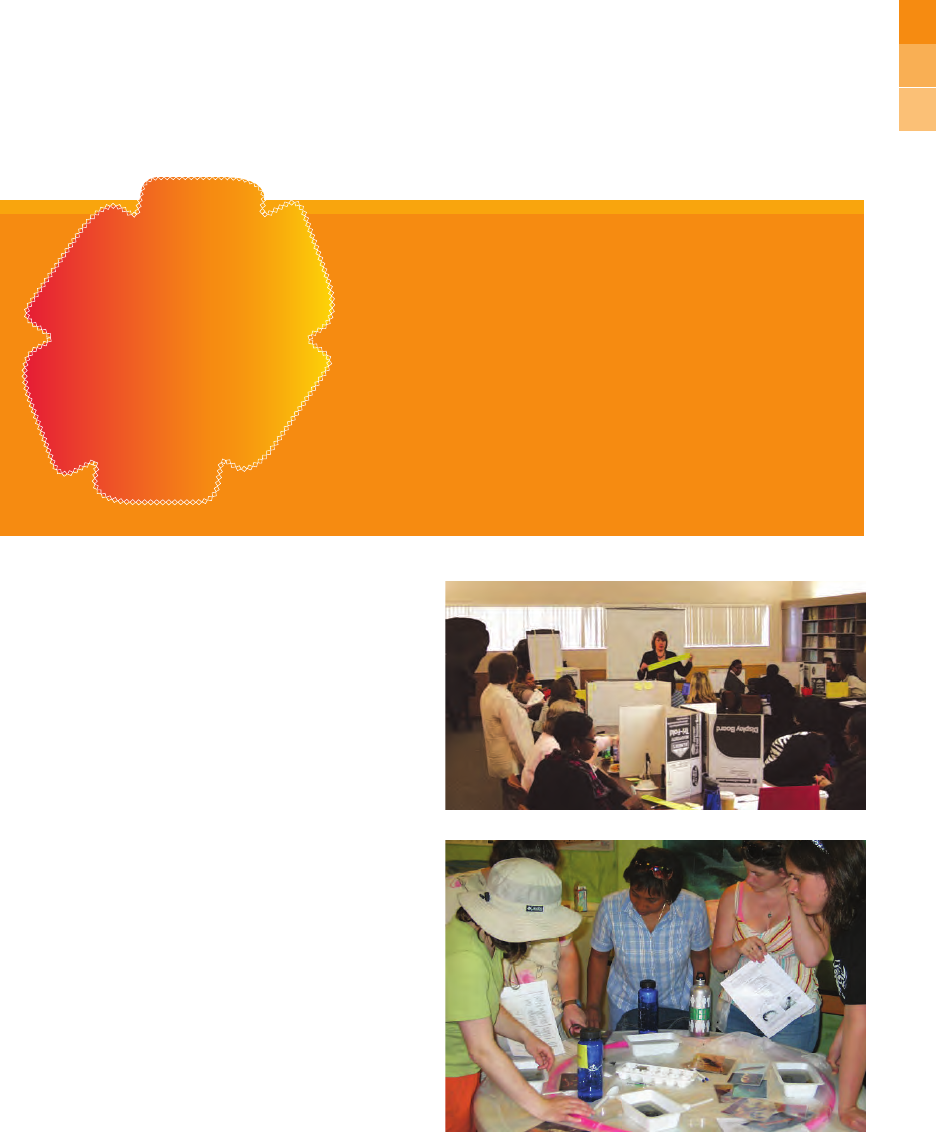
25
science.cranbrook.edu
SCIENCE ON THE SCREEN!
This Is Knowledge - In High-Definition
PROFESSIONAL DEVELOPMENT
& OTHER PROGRAMS
Add a spark to your school’s science curriculum
through the Institute’s Professional Development
Workshops. Institute scientists and educators have
spent years developing engaging programming in
support of classroom curriculum. Enhance how science
is taught through inquiry and interdisciplinary sessions.
Educators will be empowered with ideas and activities
to enhance their students’ science experiences in
the classroom.
THE FUNDAMENTALS OF INQUIRY
Explore the role of inquiry to create powerful
student experiences in science education, including
best science practices, guiding learners in develop-
ing questions and facilitating student-driven inves-
tigations at any age. This workshop supports best
science practices in the classroom and is available
as a half-day or day-long session.
DESIGN THINKING
Explore the Design Thinking process as a tool edu-
cators can utilize in their classrooms to encourage
students’ problem solving capabilities. This process
emphasizes empathy in problem solving, creating a
personal experience enhancing student learning.
Call us at 248 645.3211 to discuss a custom session for your group.
Add A Spark
To Your School's
Curriculum!
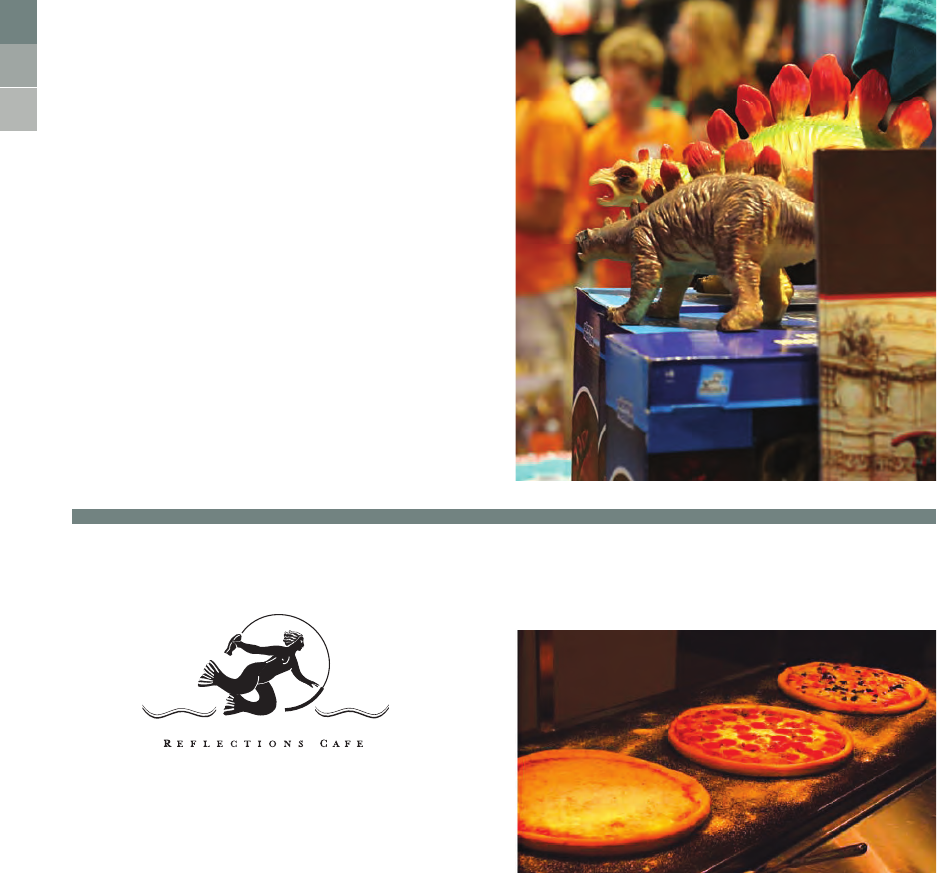
SCIENCE SHOP
BRING YOUR LUNCH
• Lunchrooms are available on a pre-scheduled basis.
• Each child should bring a lunch container identified
with the student’s name.
• Food and beverages, including gum, are not permitted
in the museum.
ORDER LUNCH FOR YOUR STUDENTS
The Institute offers lunch catering for students. Lunches
must be pre-ordered at least two weeks in advance for
delivery to the school’s designated lunchroom area at
the time of the visit.
A.
$5.50 PER PERSON
B. Orders require a 50% non-refundable deposit
at the time of order.
C. Additional a la carte items are available for an extra
charge: chips, cookies, bottled water. Call for group
pricing of these items. Specify at time of ordering if
anything extra will be purchased.
D. Reflections Cafe accepts cash, credit cards (Visa and
MasterCard) and checks (payable to Chartwells).
PLACE LUNCH ORDERS AND MAKE PAYMENT THROUGH THE
CAFE DIRECTLY AT 248 645.3201
CHOOSE ONE MEAL OPTION FOR YOUR ENTIRE GROUP.
Special requests? Food allergies? Ask us! We can
accommodate most requests and regularly offer special
dietary menus for gluten, nut and other food allergies.
ONE TEACHER/CHAPERONE EATS FREE WHEN MINIMUM
OF 25 ORDERS ARE CONFIRMED.
26
248 645.3210
LUNCH AT THE INSTITUTE OF SCIENCE
MEAL 2
Turkey and Cheese or
Ham and Cheese Sandwich
Cheese stick or pretzels
Cookie
Applesauce
Juice Box
MEAL 1
Fresh pizza slice
(cheese or cheese and pepperoni)
Pretzels
Cookie
Applesauce
Juice Box
The Science Shop at Cranbrook Institute of
Science provides a wonderful opportunity
to enhance the learning experience with a
personal artifact that reinforces scientific
concepts and provides a positive memory of
the visit.
Teachers and Chaperones receive a 10% discount
off their purchases at the Science Shop.
NO TIME TO SHOP? CALL AHEAD AND PICK YOUR ORDER
UP DURING YOUR VISIT! 248 645.3207 HINT! GO ONLINE
TO SEE SPECIFIC PRODUCTS AND PRICES.
1.
2.
3.

27
science.cranbrook.edu
THE STORY OF US
The Story of Us showcases the very best
of the Institute’s nationally-regarded
anthropology collection and offers an
immersion experience unprecedented
at Cranbrook. Visitors will experience
the exhibition with the help of a virtual
holographic-like personal guide and use
individual touch-screen interfaces to
learn more about objects that interest
them.
LIFE CHANGES OVER TIME
Come face to face with a full-sized
Tyrannosaurus rex skeleton cast and ex-
amines natural selection and evolution
by exploring the question “Are birds the
descendants of dinosaurs?”
ICE AGES COME AND GO
This exhibit presents climatic varia-
tions that have buried Michigan under
ice over and over again. Hands-on
interactives and visual diagrams help
visitors explore issues like seasons, heat
distribution and how heat travels across
the globe.
MASTODONS DID NOT SURVIVE
This exhibit examines extinction through
the example of the mastodon, which
used to be plentiful in Michigan during
the last ice age.
BY NATIVE HANDS
The rich culture of Great Lakes native
peoples reflects a complex connection
between objects, practices and the
environment.
READING OBJECTS
Every object—a pair of shoes, a necklace,
a flag—holds different meanings for
different people, and how we decode ob-
jects varies depending on culture, previ-
ous experience and prior knowledge.
WOODLANDS DEN
Retained as originally created, these
dioramas of Michigan plant associa-
tions capture both a reminder of the
Institute’s past and a glimpse of habitats
increasingly threatened throughout the
state.
THE MOTION GALLERY
Lose your fear of physics with hands-
on experiments that demonstrate the
basic yet profound concepts of matter
in motion.
CRANBROOK OBSERVATORY
Three new telescopes, architectural
changes in the viewing space, a new
dome, and compatibility with the plane-
tarium offer an astronomical experience
unparalleled anywhere in the Midwest.
The Observatory is open weekends
throughout the year.
EVERY ROCK HAS A STORY
Was Michigan once located in the
tropics? Will California crumble into the
Pacific Ocean? The earth is constantly
changing right under your feet and the
exciting results range from earthquakes
and volcanoes to granite and diamonds.
ASTRONOMY GALLERY
The Astronomy Gallery includes
ViewSpace, a self-updating exhibit from
the Space Telescope Science Institute.
ACHESON PLANETARIUM
The planetarium at Cranbrook Institute
of Science is an intimate theater that
allows you to explore and experience
the universe. Preregistration required
for field trips.
MINERAL STUDY GALLERY
Cranbrook founder George Booth start-
ed this mineral collection in 1926 with
only a few hundred specimens. Since
then, it has grown to more than 11,000
specimens.
PERMANENT GALLERIES & INSTALLATIONS
Cranbrook Institute of Science houses eleven permanent galleries that cover topics related to
anthropology, astronomy, ecosystems, earth science, fluid earth, life science and physical
science. Include a stop to one or many of our galleries as part of your field trip and help
students see the interconnections with everything around them.
ACHESON LIGHT LAB
Light Lab, an ingeniously subtle science
lesson, is a space designed to encourage
curiosity.
ICE AGE SURVIVORS
Ice Age Survivors focuses on large
animals or megafauna that survived the
last pulse of the Late Quaternary extinc-
tions in North America that occurred
between 11,500 and 10,000 radiocarbon
years ago.
WATER IS LIKE NOTHING ELSE
See the power of water on the bed of
an ancient sea, make a storm, and work
with an interactive kiosk to explore
freshwater issues.
THE ERB FAMILY SCIENCE GARDEN
Featuring a dynamic garden of Michigan
native plants that change with the sea-
sons and a water feature highlighting
water in its vapor, liquid and solid states,
the Erb Garden is open seasonally.
EXPLORE LAB - NEW
The Institute’s newest educational and
exhibition space, exploreLAB offers
both public and field trip programming.
Themed, hands-on activities, objects
from the Institute’s collections, chang-
ing installations, and rotating experi-
ences create a learning and exploration
environment unlike any other.
Field trip programming in exploreLAB
begins January 9 and runs through
June 8, 2018. Preregistration is
required.

28
248 645.3210
CHANGING EXHIBITIONS
This exhibition brings to life the lost and forgotten technology and
inventions that set the Roman Empire apart from the rest of the
world and which continue to influence us to this day. By reconstructing
ancient Roman technology using the same materials and techniques
that the Romans used thousands of years ago we can learn so much
that would not have been possible solely by studying archaeological
finds and original texts.
A unique tree in a lush tropical environment. A seed so precious it
was used as money. A spicy drink and a sweet snack. A heavenly
craving and a sublime pleasure. Chocolate is all this… and much more.
Explore the relationship between human culture and this rainforest
treasure in Chocolate.
CHOCOLATE September 23, 2017 - January 7, 2018
ANCIENT ROME: AGE OF THE CAESARS
February 3 - July 3, 2018
Chocolate and its national tour were
developed by The Field Museum, Chicago.
This exhibition was supported, in part,
by the National Science Foundation.
CHOCOLATE is presented by:
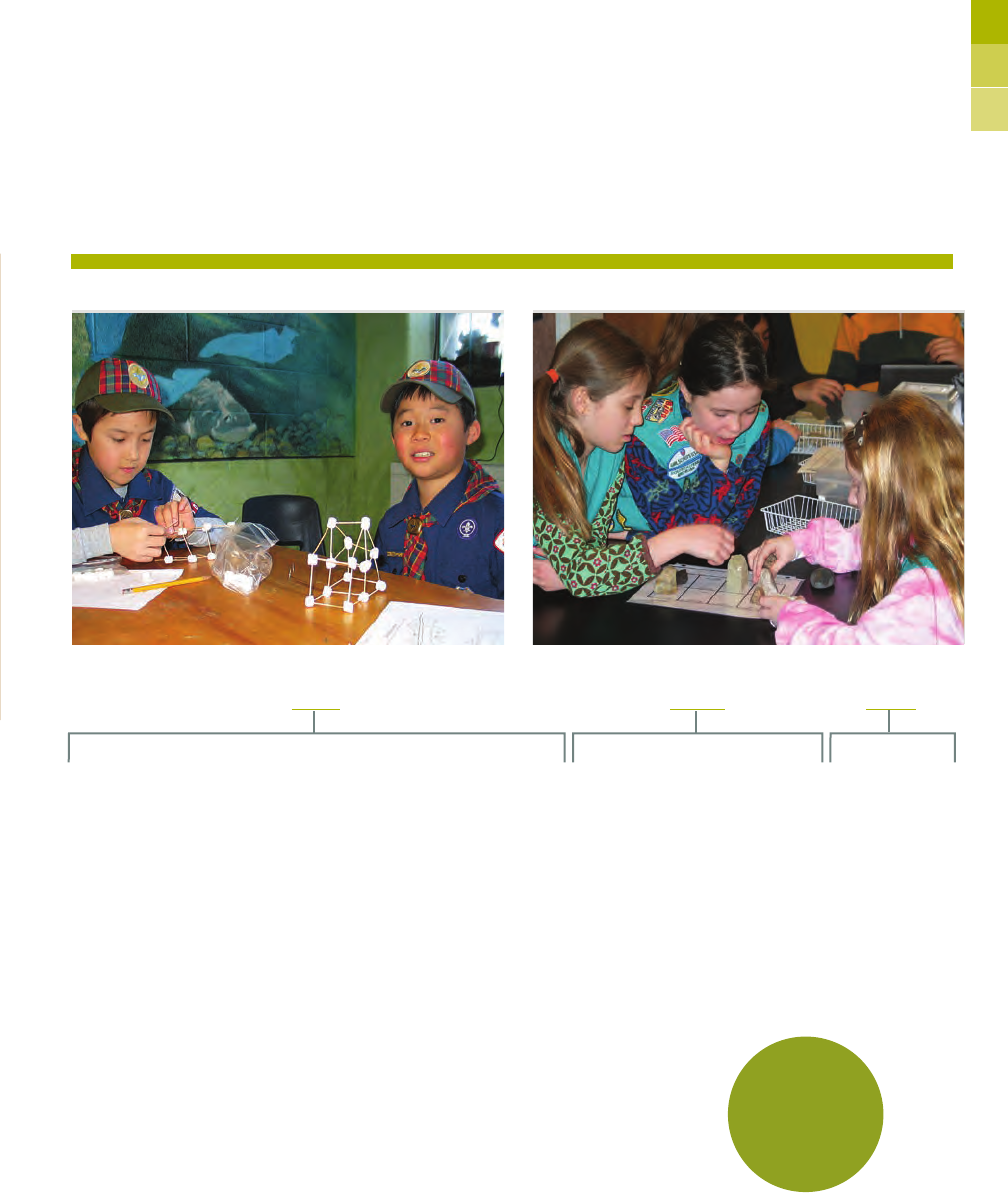
29
science.cranbrook.edu
SCOUT PROGRAMS
WORKSHOPS AT CRANBROOK INSTITUTE OF SCIENCE PROVIDE SCOUTS THE
CHANCE TO WORK WITH PROFESSIONAL SCIENTISTS WHO ARE ACTIVE IN
THEIR FIELDS AND THE OPPORTUNITY TO INTERACT WITH A UNIQUE,
WORLD-CLASS COLLECTION OF OBJECTS AND ARTIFACTS.
WORKSHOPS
OVERNIGHT WORKSHOPS INCLUDE
• 2-hour workshop
Auditorium physics program (excluding CSI)
• Planetarium program
• Evening snack
• Continental breakfast
WORKSHOP INFORMATION
• Workshops include general
admission to the Museum
• Schedule multiple workshops on
the same day to receive a discount
• Lunch available for purchase — see page 26
Preview programming and register online at science.cranbrook.edu or call 248 645.3210. Advance registration required.
,
PROGRAMS
AVAILABLE
OCTOBER 2017–
MAY 2018
CUB SCOUTS
TIGER
Sky is the Limit
WOLF
Air of the Wolf
Finding Your Way
BEAR
Forensics
Make it Move
Super Science
WEBELOS
Adventures in
Science
Earth Rocks!
Engineer
Into the Woods
Walkabout
Archaeology
Astronomy
Chemistry
Electricity
Environmental
Science
Fish + Wildlife
Management
Geology
Indian Lore
Plant Science
Soil & Water
Conservation
Space Exploration
Sustainability
Weather
DAISY
Using Resources
Wisely
BROWNIES
Bugs
Hiker
Home Scientist
Potter
Senses
Water
JUNIORS
Flowers
Jeweler
OVERNIGHTS
All Scout Science
All Scout
Astronomy
Juniors/Cadettes
CSI
BOTHGIRLSBOYS
BOY SCOUTS
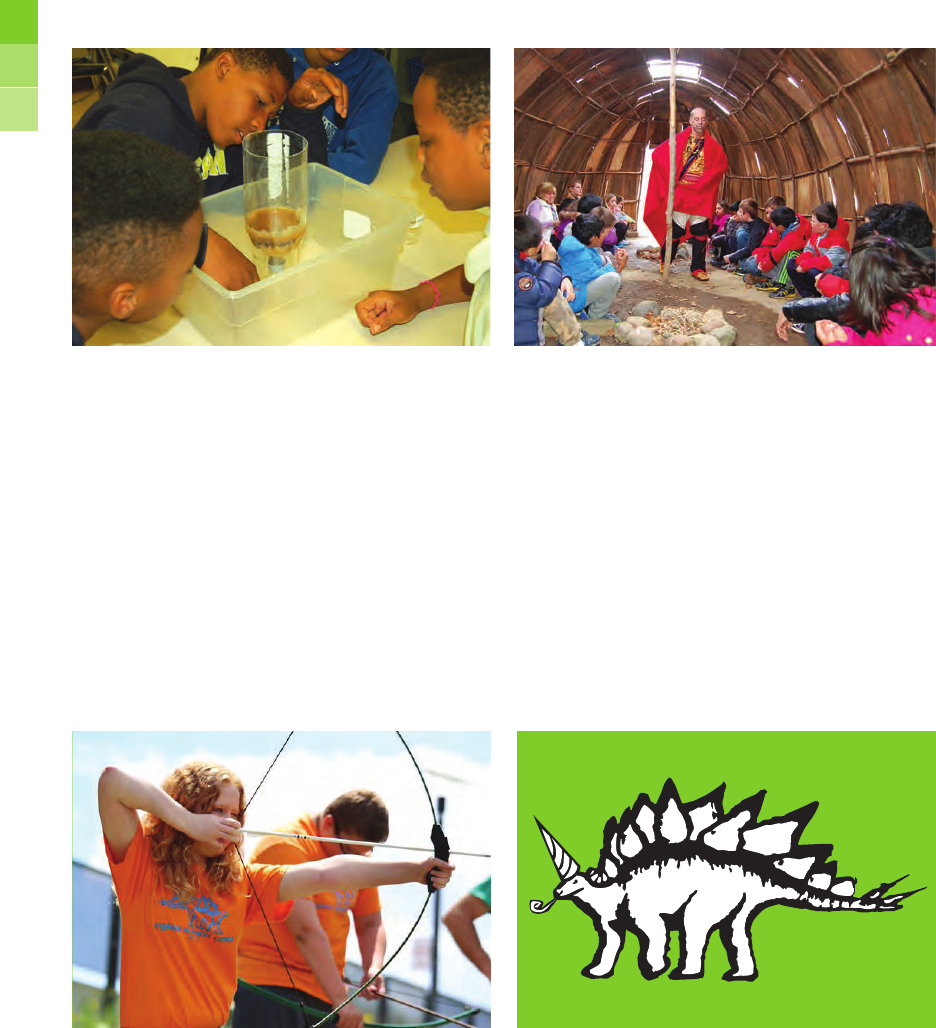
30
248 645.3210
OVERNIGHT SCHOOL
FIELD TRIPS
Overnight field trips to the Institute offer your
students the opportunity to work with museum
professionals active in their fields. Overnights
include three mini science workshops with our
science experts, a student participation auditorium
program, a visit to the Acheson Planetarium, plus
the visit to our museum exhibits.
Overnights are available any day of the week,
contact our Scheduling Office at 248 645.3210 to
check date availability and cost.
HOMESCHOOL PROGRAMS
Visit Cranbrook Institute of Science and en-
hance your homeschool curriculum. From hun-
dreds of specimens and artifacts on display, to
engaging programming, any homeschool class-
room comes alive with a visit to the Institute!
Contact our Scheduling Office to hear how you
or your group can register for a field trip:
248 645.3210.
SUMMER CAMP
Campers entering kindergarten through 5th
grade utilize Cranbrook’s 319-acre outdoor
laboratory and the resources of a museum to
explore science and create a lifetime of memories
and learning experiences. Week-long day camps
run during summer months.
PLAN A BIRTHDAY PARTY
We’ve got birthday parties down to a science! From
dinosaur digs to scavenger hunts, museum tours,
and private planetarium shows, we have many
customizable options!
Find out more by visiting science.cranbrook.edu or
calling 248 645.3193.
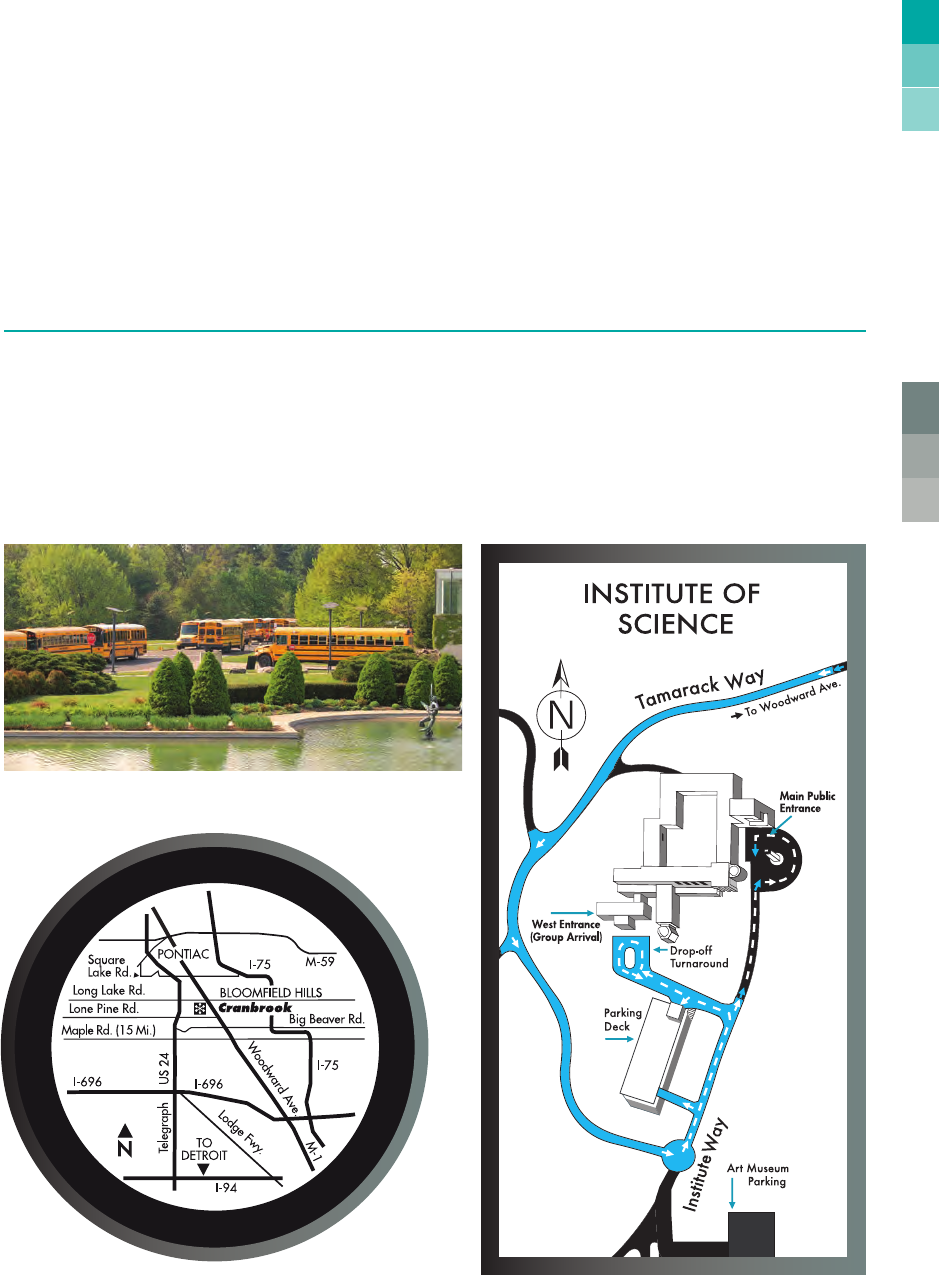
31
science.cranbrook.edu
PLEASE STAY ON YOUR BUS AND A STAFF MEMBER WILL COME TO
GREET YOUR GROUP AND PROVIDE INFORMATION FOR THE DAY’S VISIT.
DESTINATION MAP
TRANSPORTATION & MAPS
CAMPUS MAP
Membership at Cranbrook Institute of Science is a great way to open
the door to discovery and explore the world of science with your family
and friends. Our exceptional exhibits, planetarium, and programming
deliver a day of education and inspiration.
JOIN TODAY!
BECOME A MEMBER!

science.cranbrook.edu
Educational Programs Proudly Sponsored In Part By:
ACHESON FAMILY FOUNDATION
ASPLUNDH TREE EXPERT COMPANY
BAIARDI FAMILY FOUNDATION
BOSCH COMMUNITY FUND
CHARLES STEWART MOTT FOUNDATION
COMMUNITY FOUNDATION FOR SOUTHEAST MICHIGAN
CONSUMERS ENERGY FOUNDATION
DELPHI FOUNDATION
THE DEROY TESTAMENTARY FOUNDATION
DENSO INTERNATIONAL AMERICA, INC.
DETROIT AUTO DEALERS ASSOCIATION
CHARITABLE FOUNDATION FUND
DTE ENERGY FOUNDATION
FLAGSTAR BANK
THE FRED A. AND BARBARA M. ERB FAMILY FOUNDATION
HUDSON-WEBBER FOUNDATION
IDEAL GROUP
ITC HOLDINGS CORPORATION
KAPPEN TREE SERVICE, LLC
KAREN & DREW PESLAR FOUNDATION
THE KRESGE FOUNDATION
LEAR CORPORATION
MARY G. STANGE CHARITABLE TRUST
MASCO CORPORATION FOUNDATION
OAKLAND COUNTY WATER RESOURCES COMMISSIONER'S OFFICE
PNC FOUNDATION
PURE OAKLAND WATER (POW)
THE TOWNSEND CORPORATION
UTILITY SUPPLY AND CONSTRUCTION
NON-PROFIT ORG.
U.S. POSTAGE
PAID
PERMIT NO. 429
ROYAL OAK, MI
Cranbrook Educational Community
P.O. Box 801 • Bloomfield Hills, MI 48303-0801
http://science.crnbrook.edu
